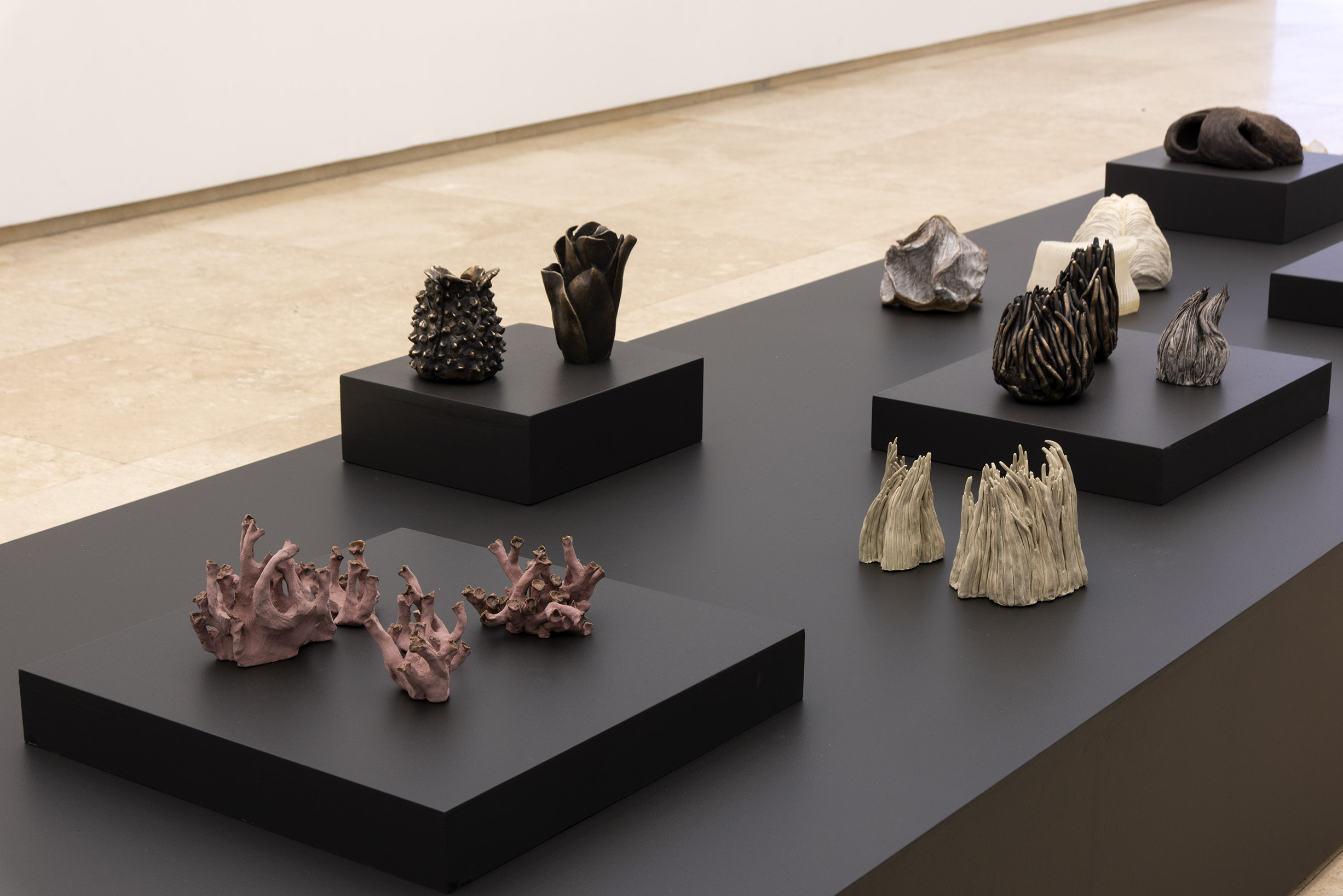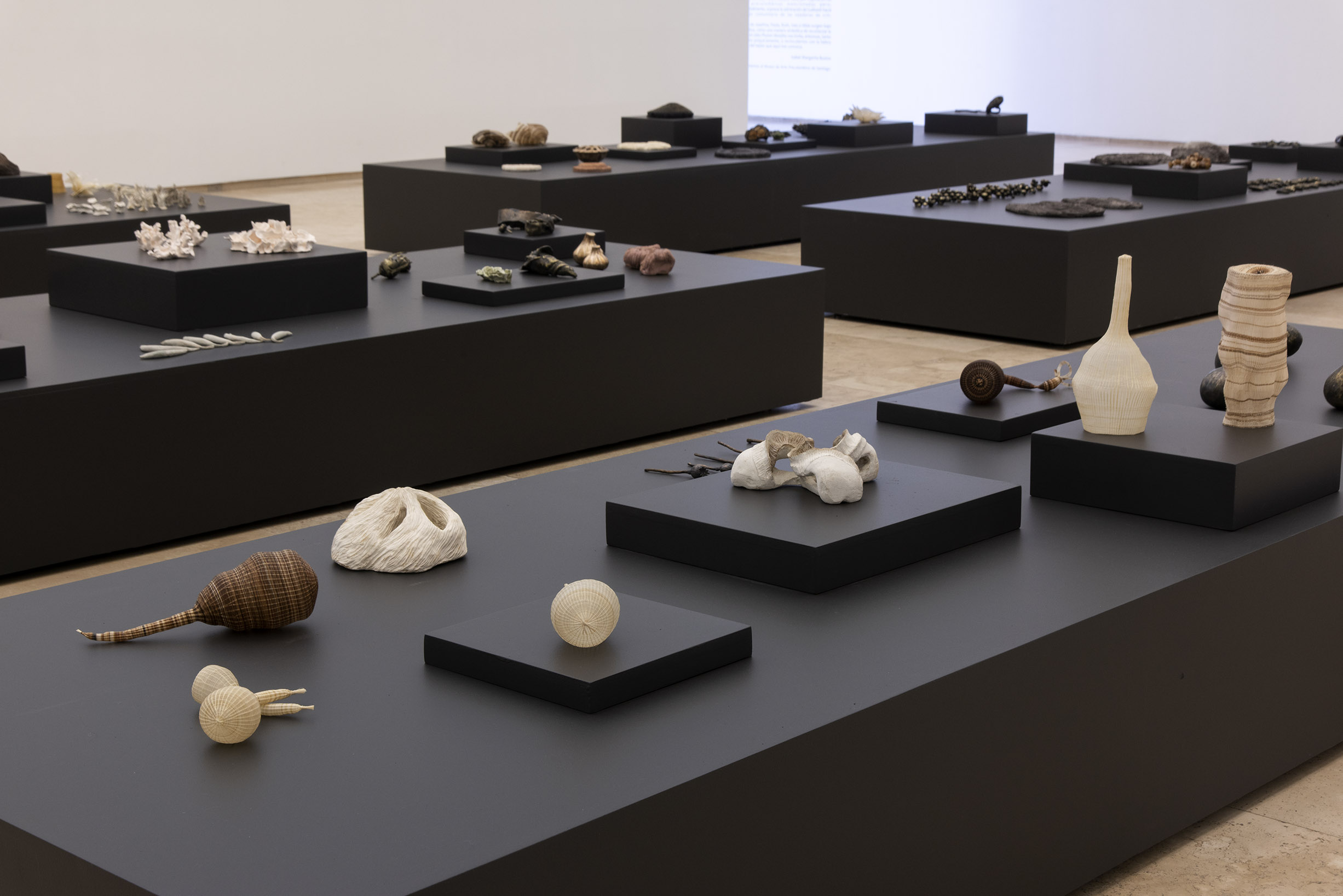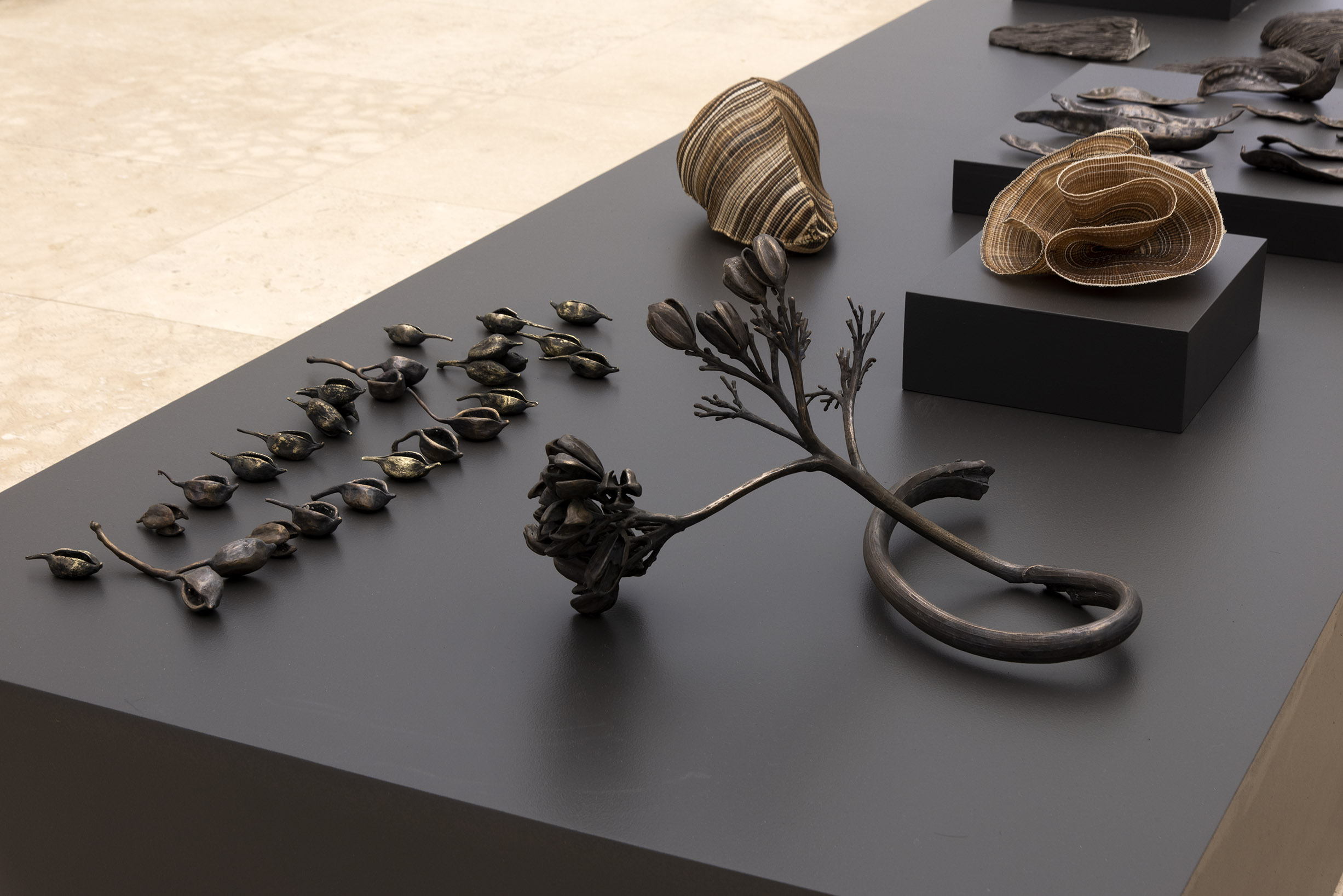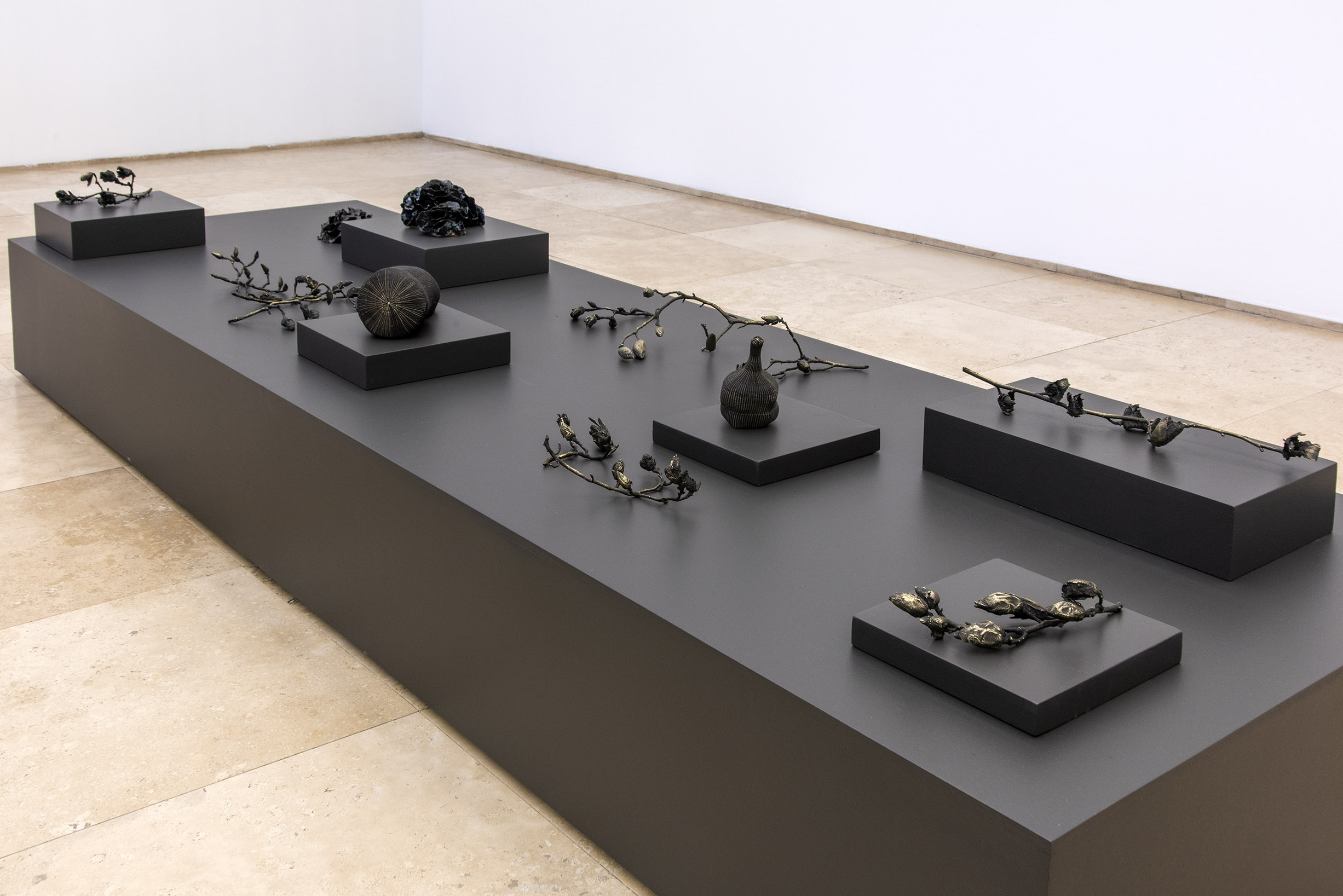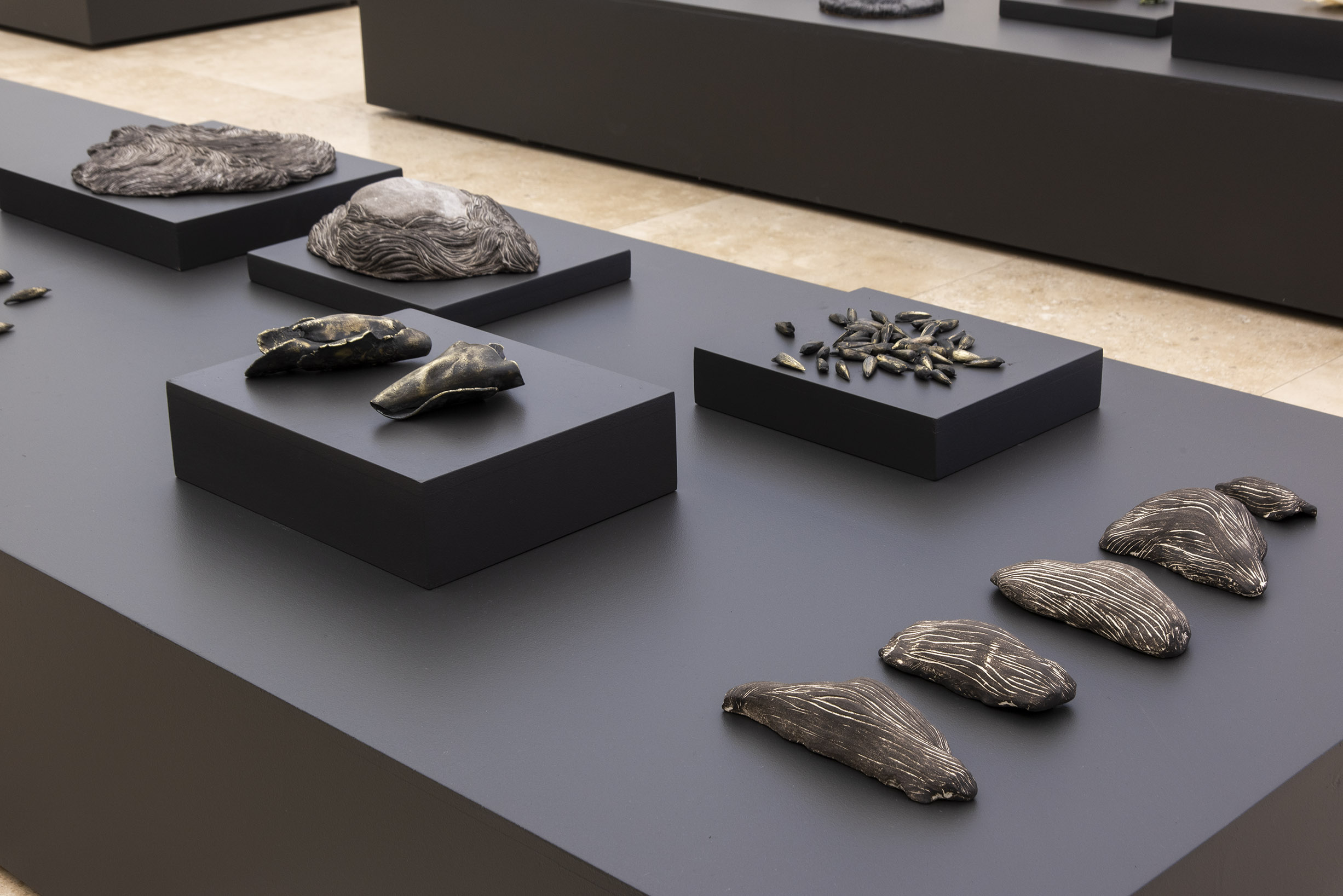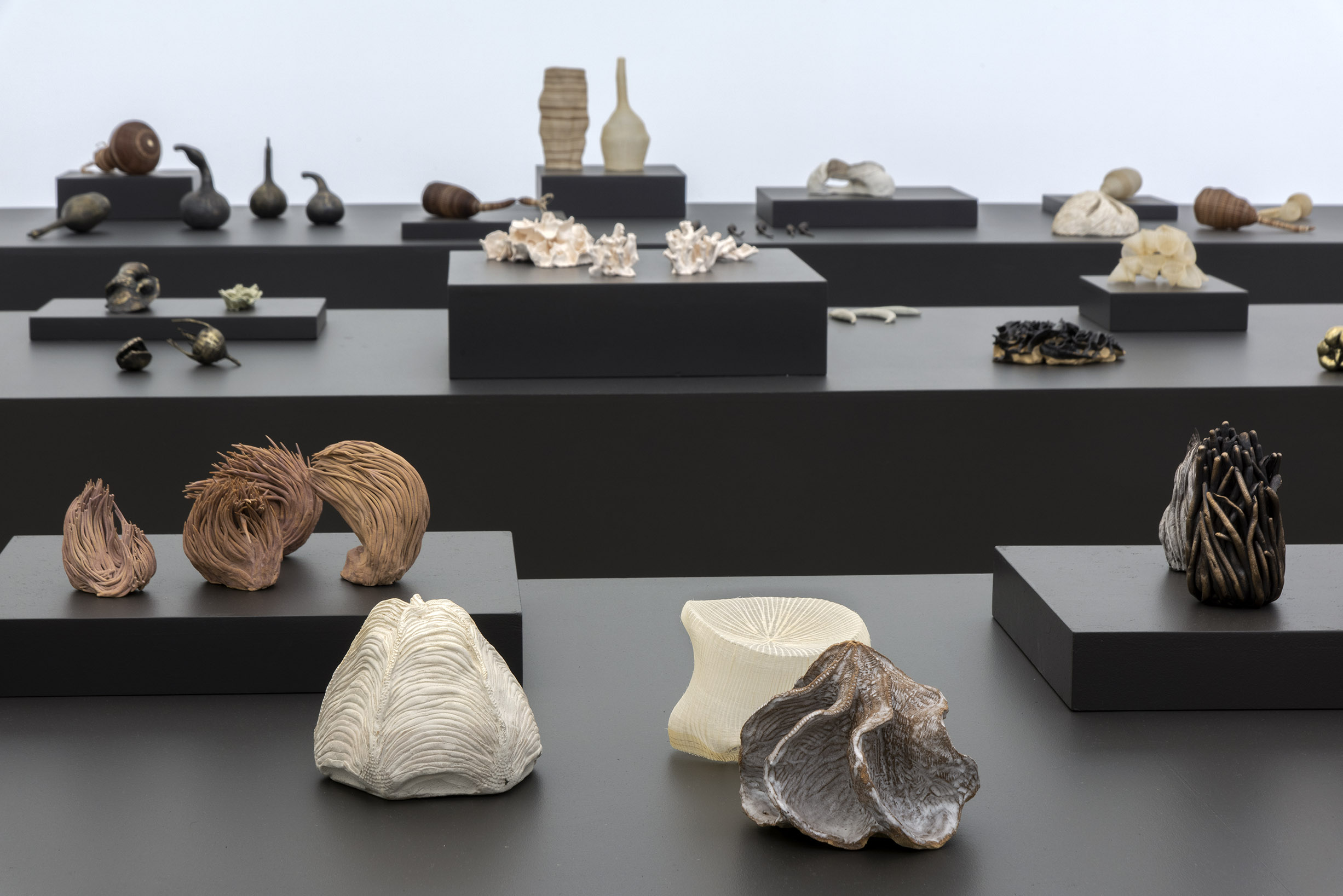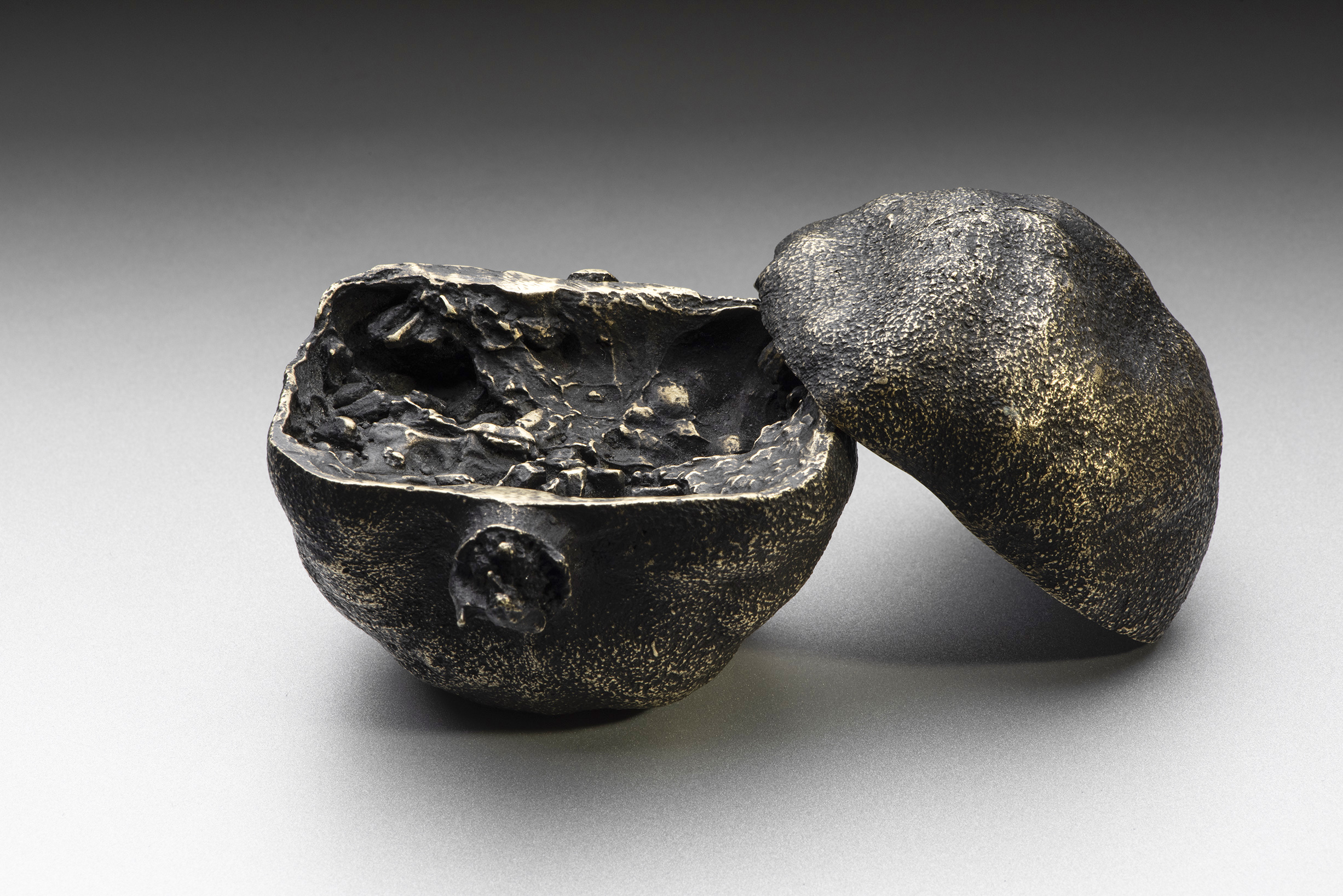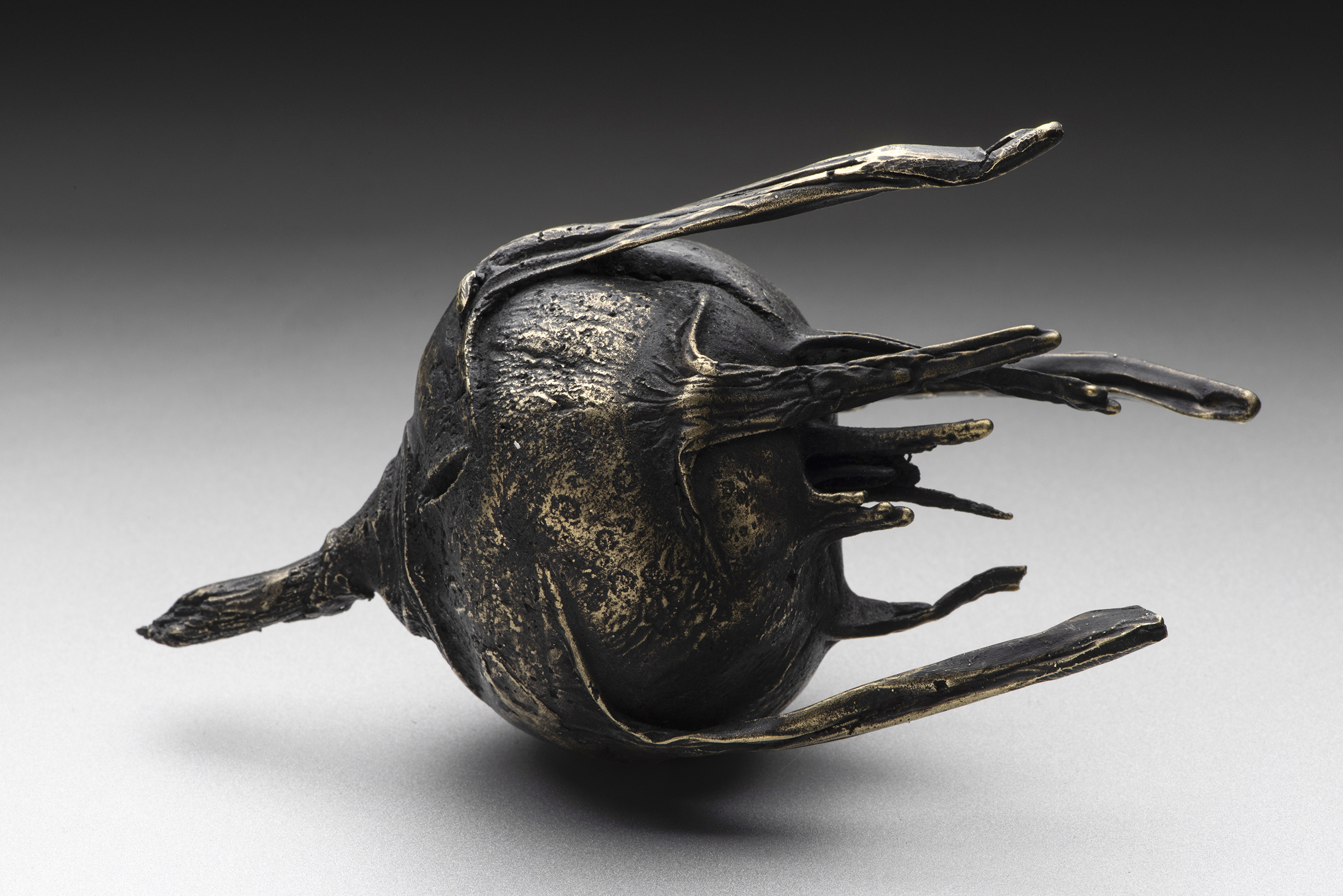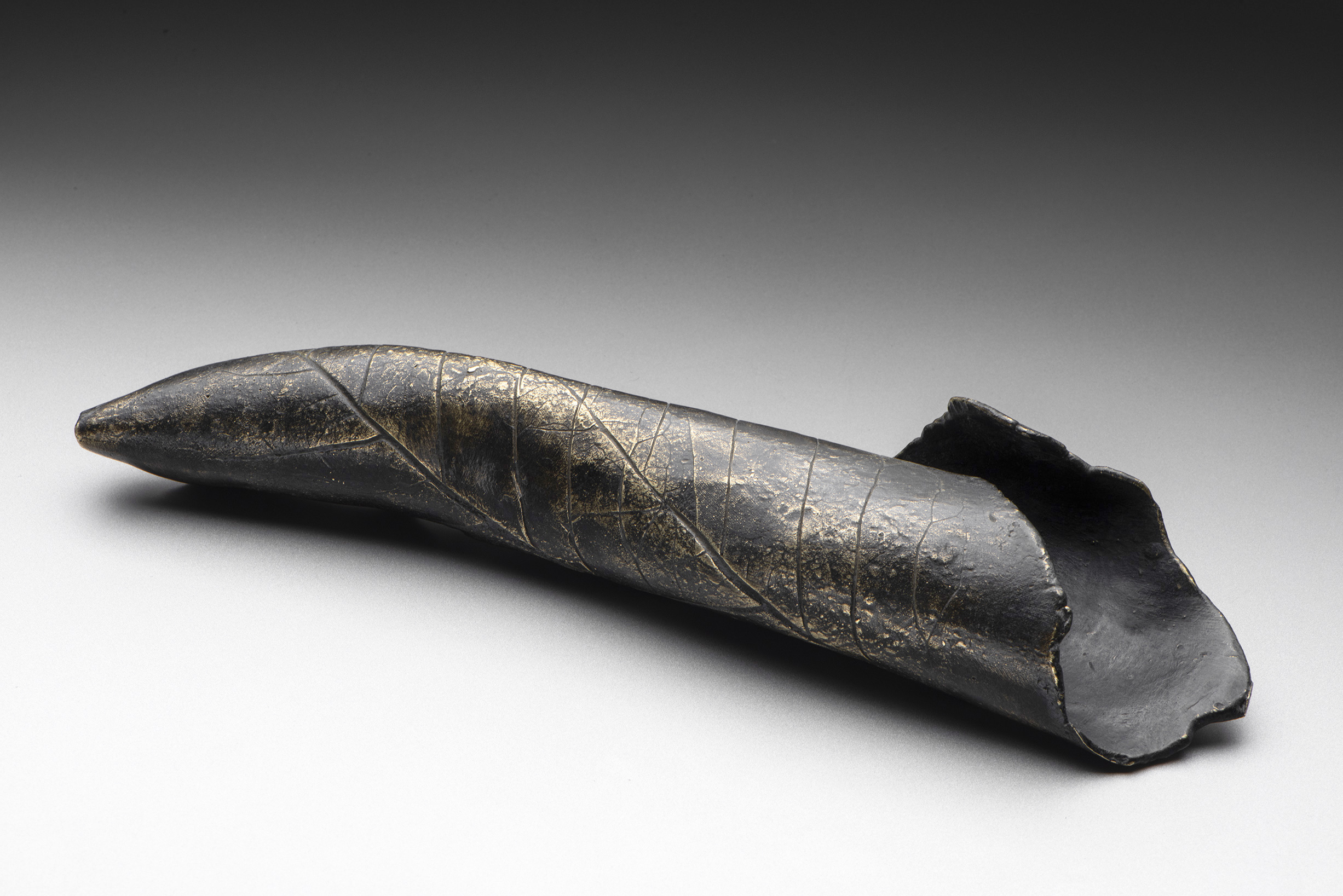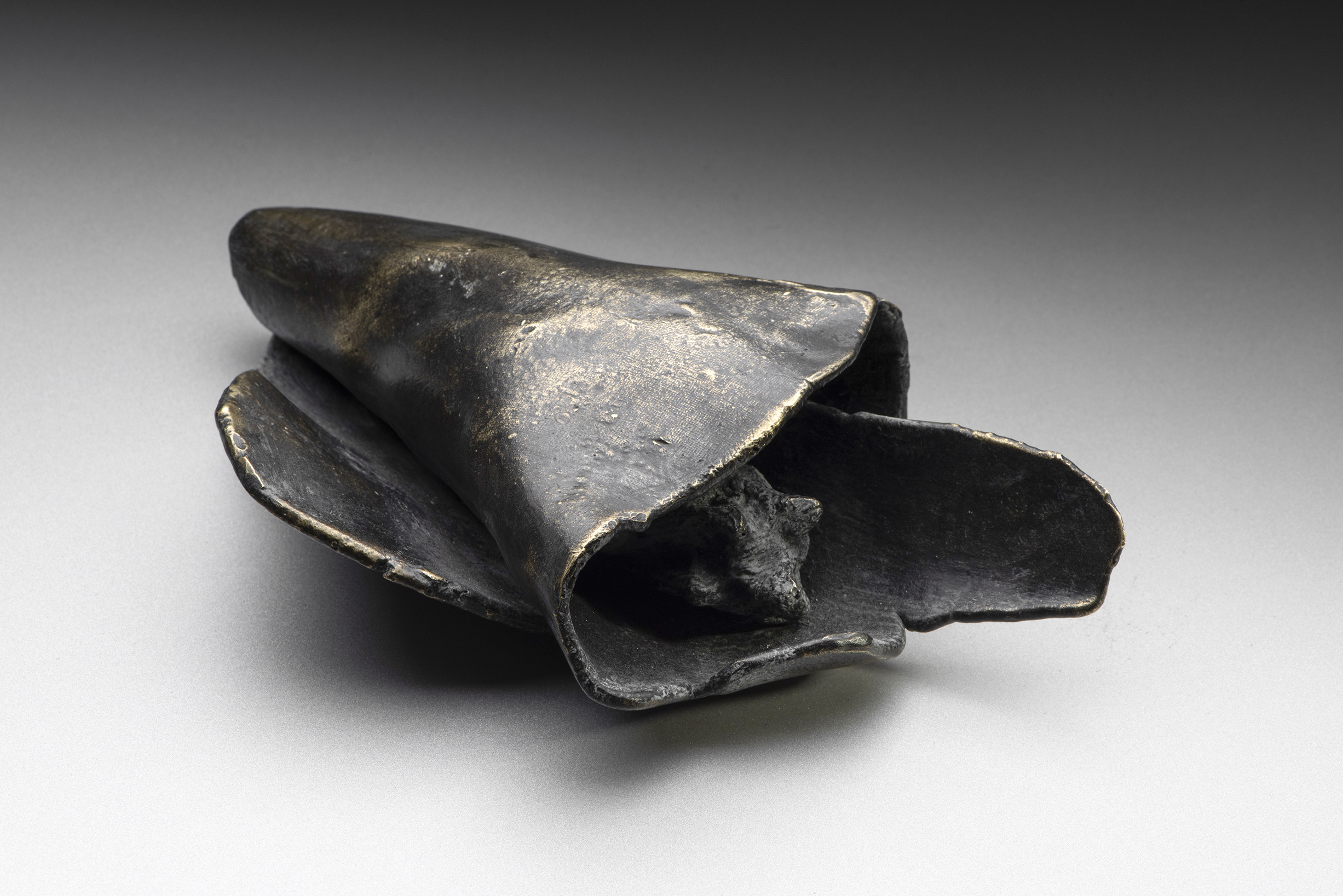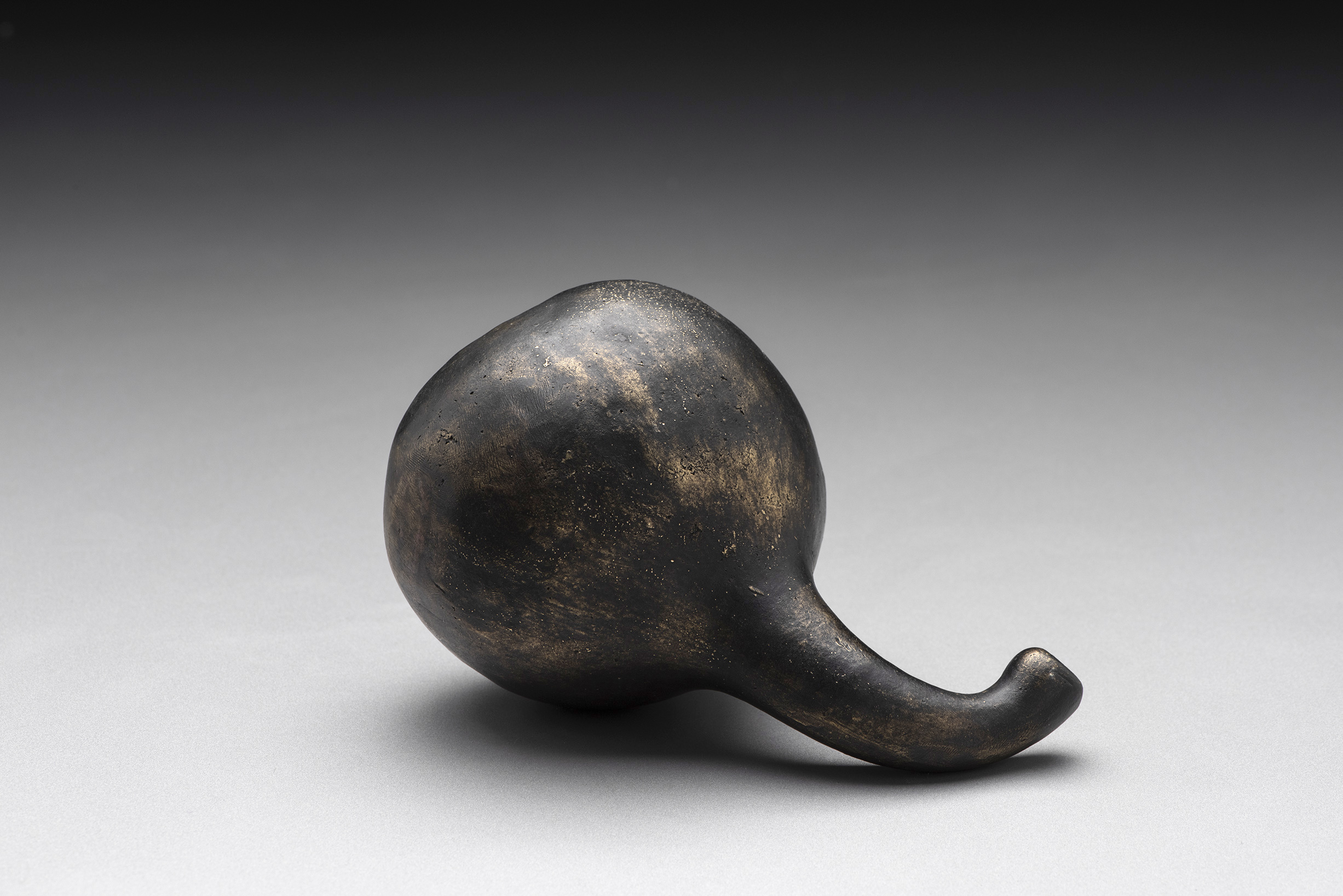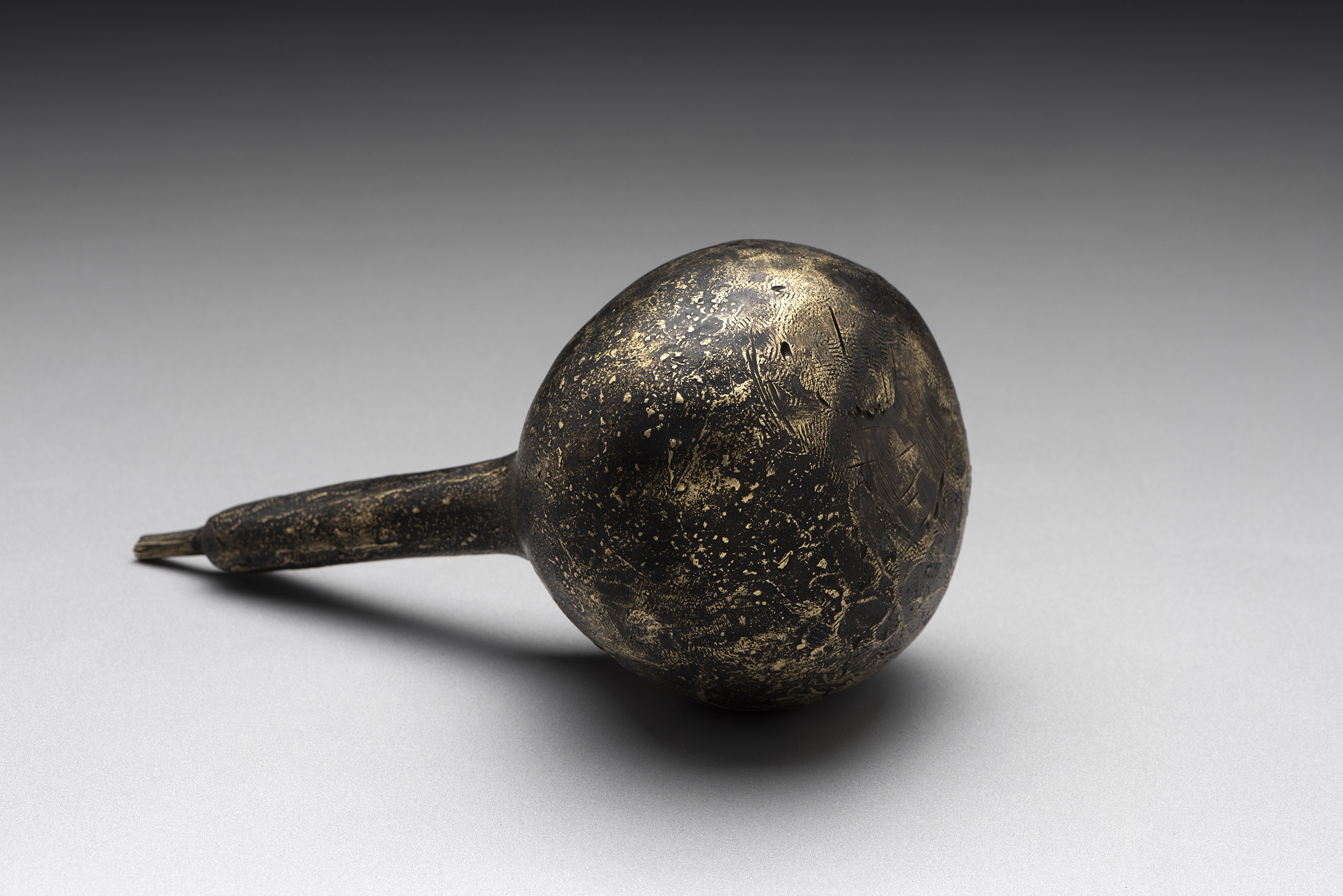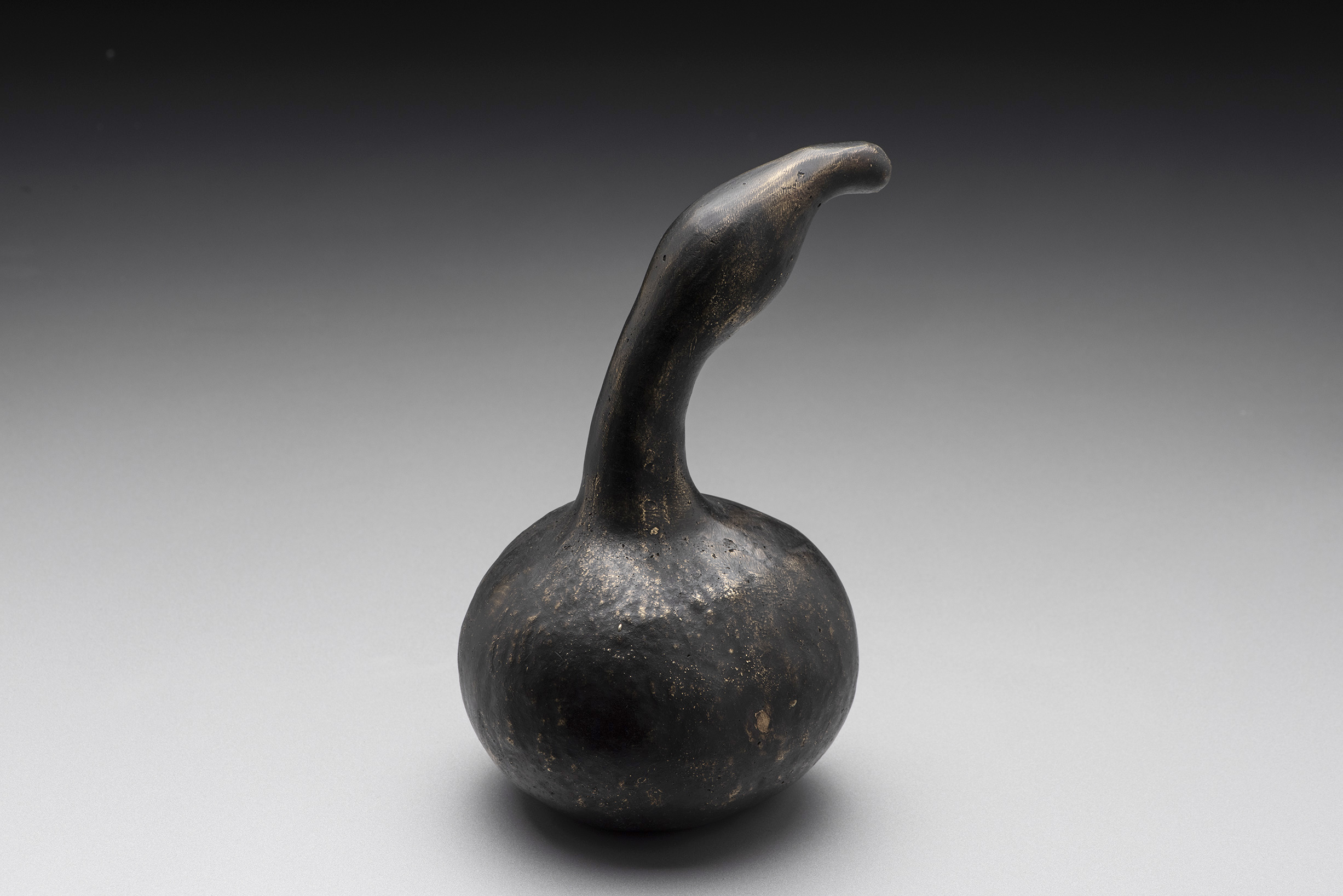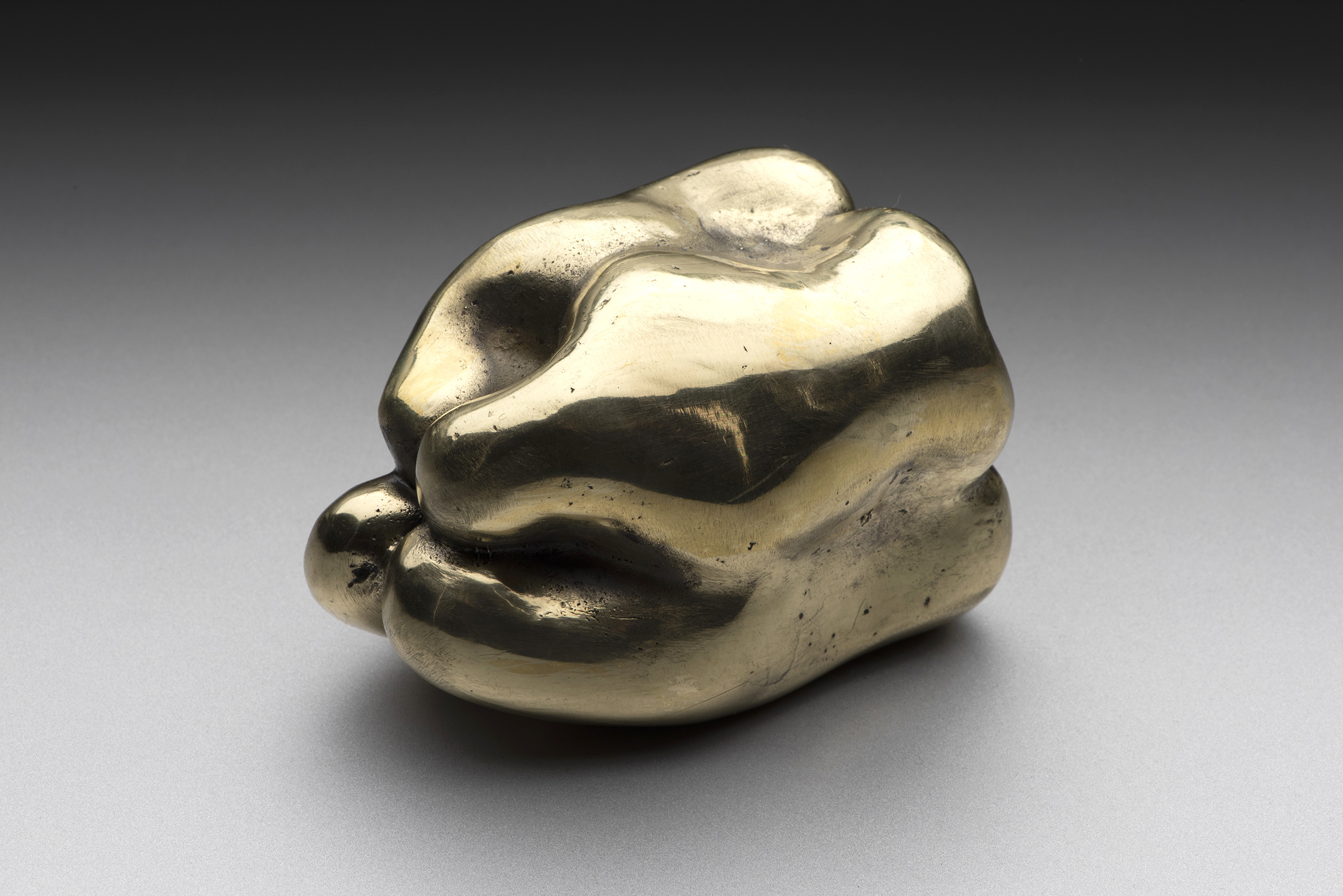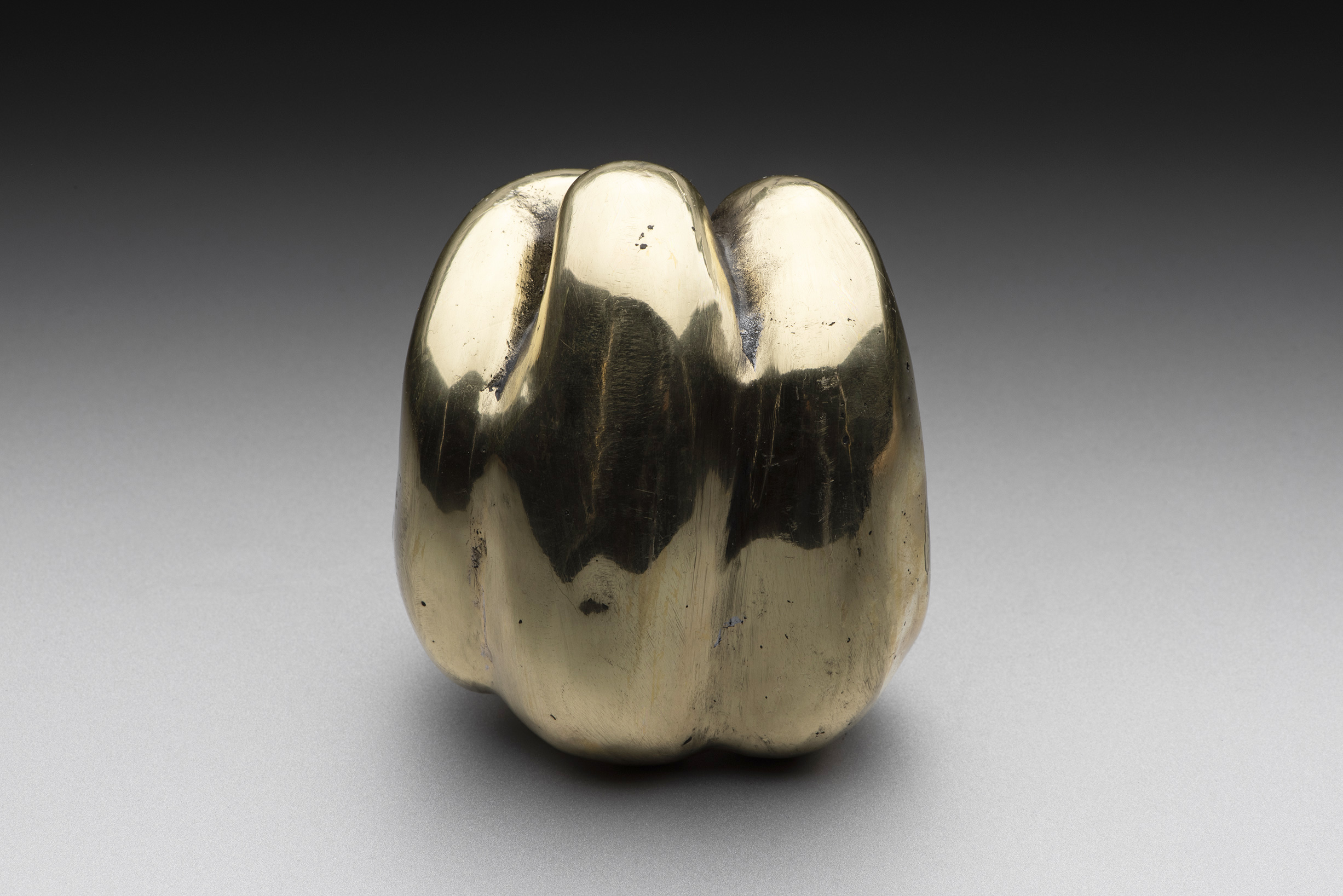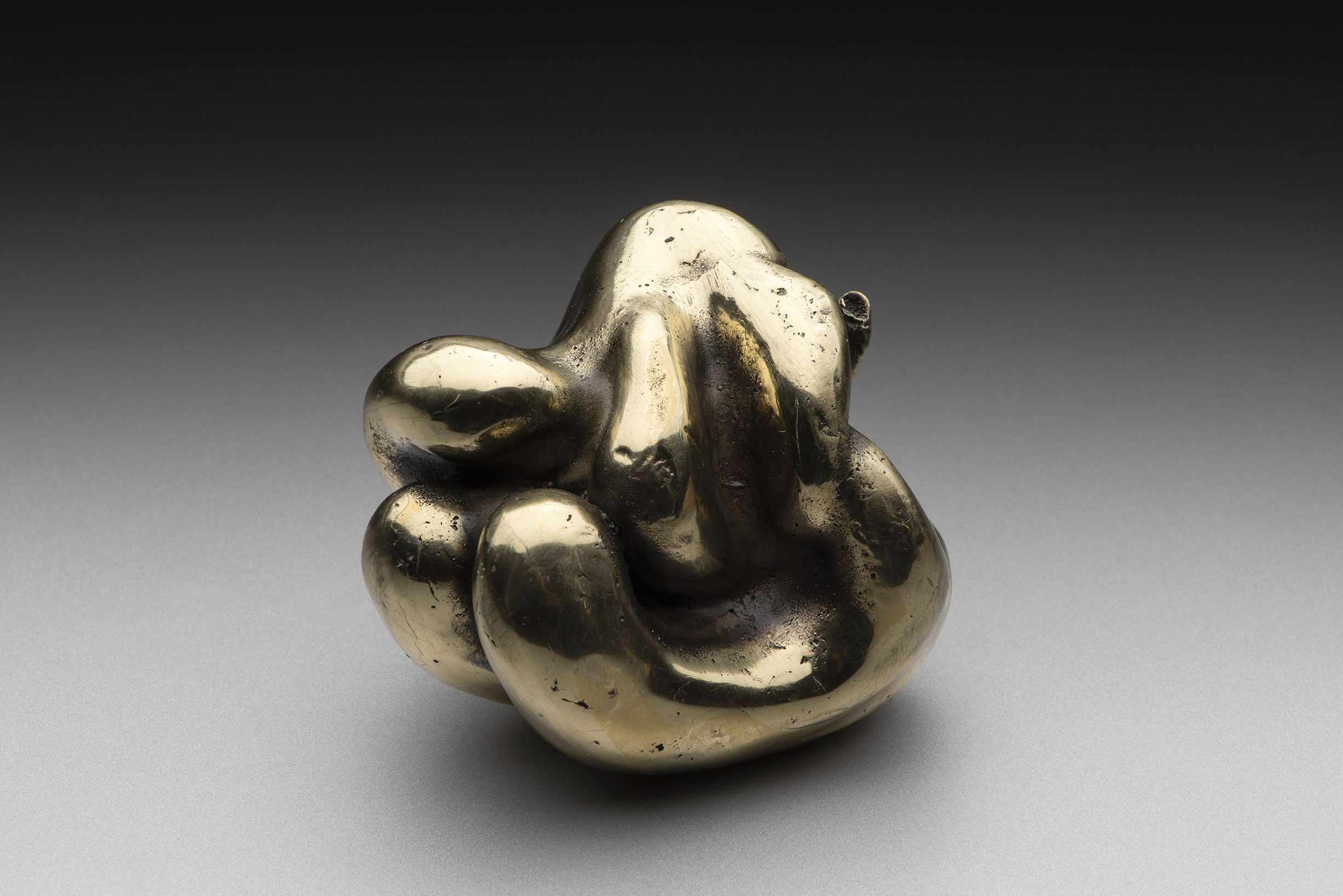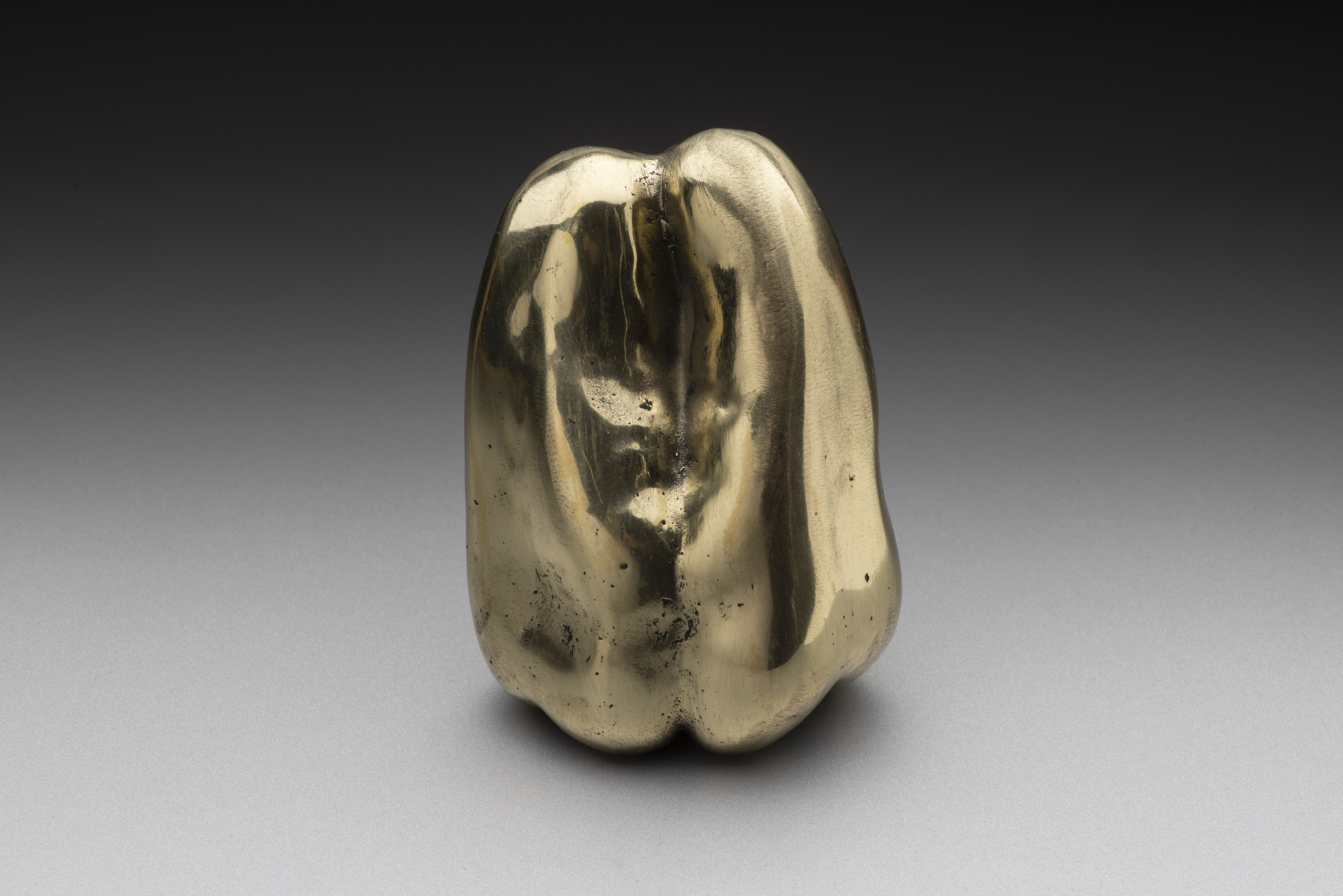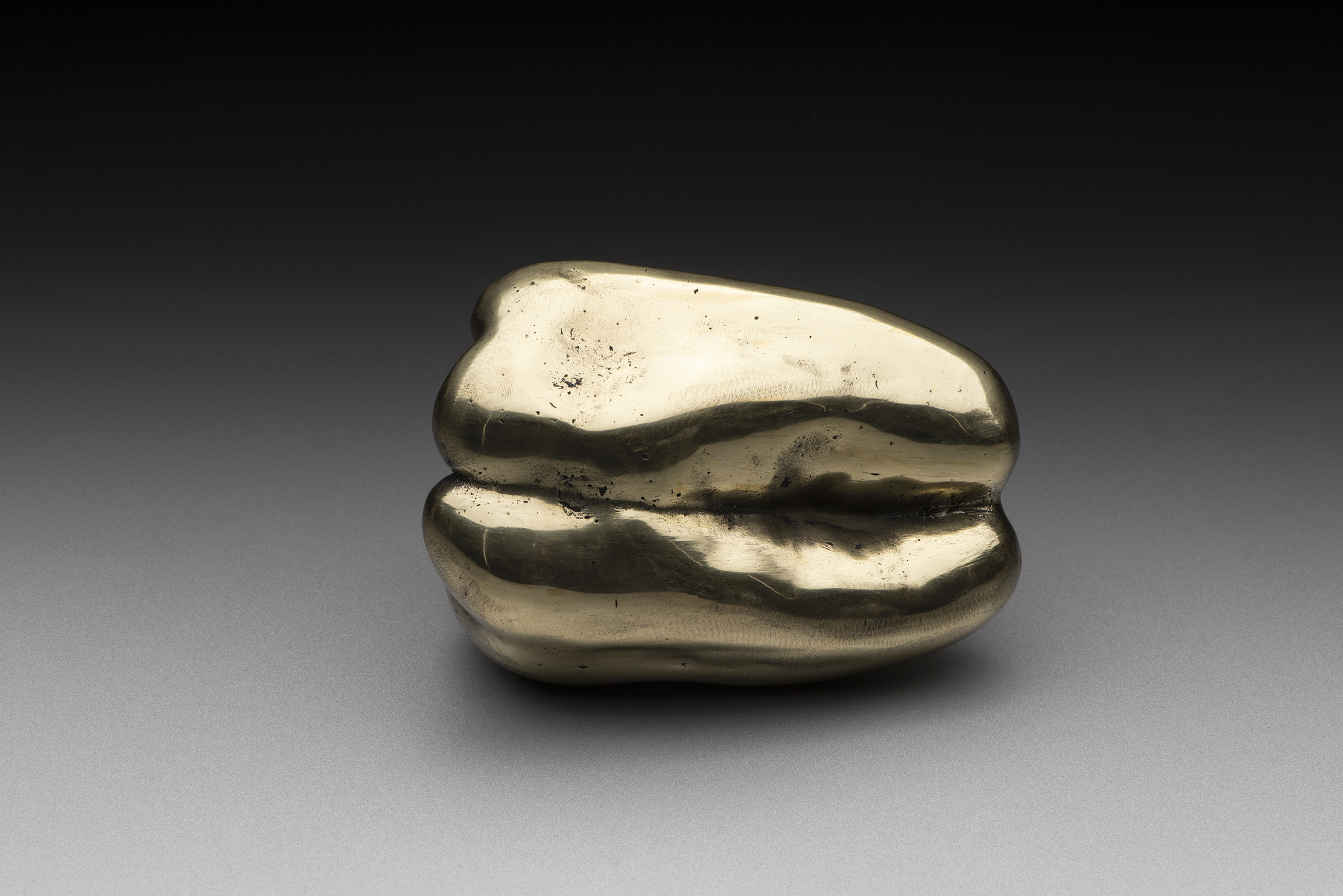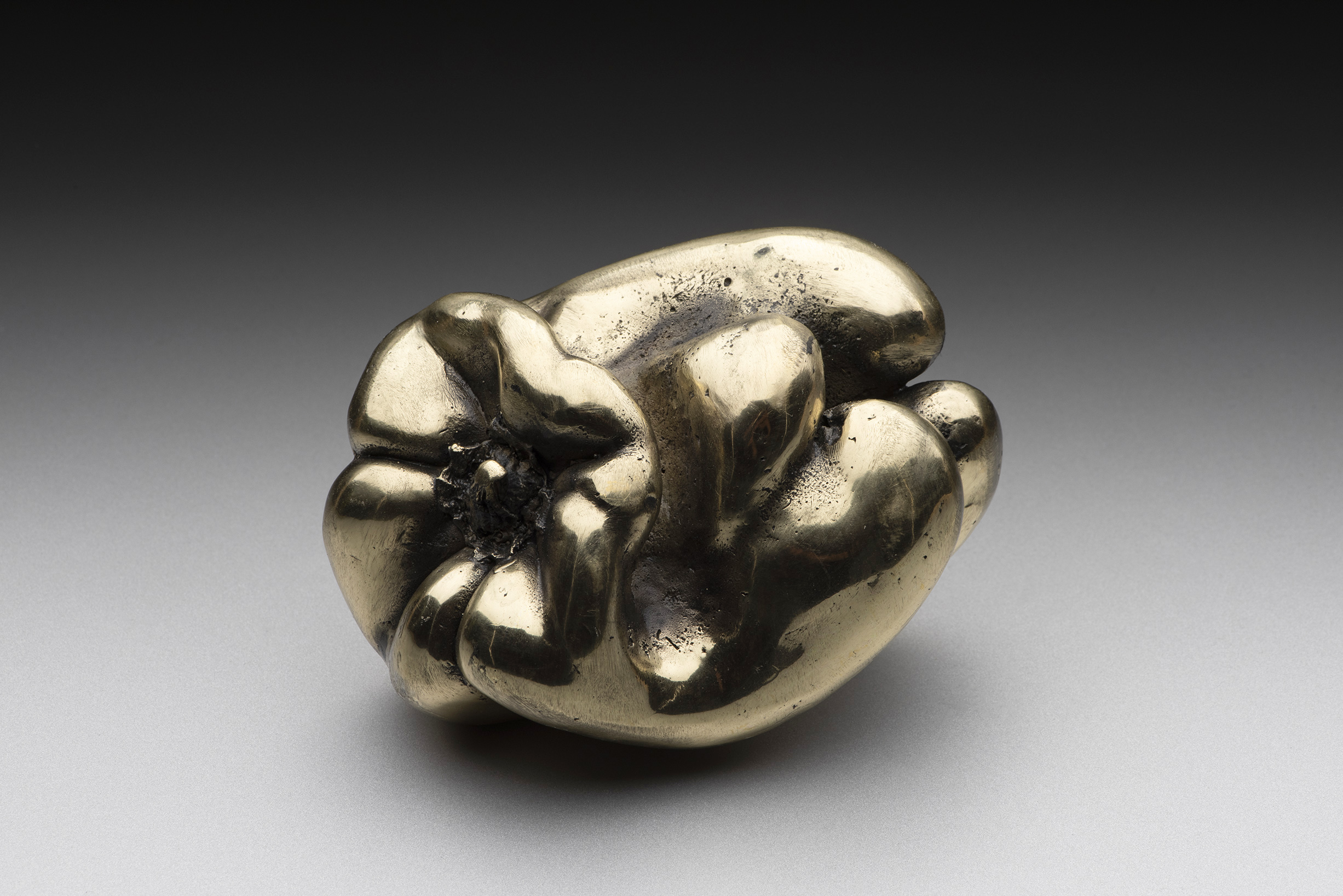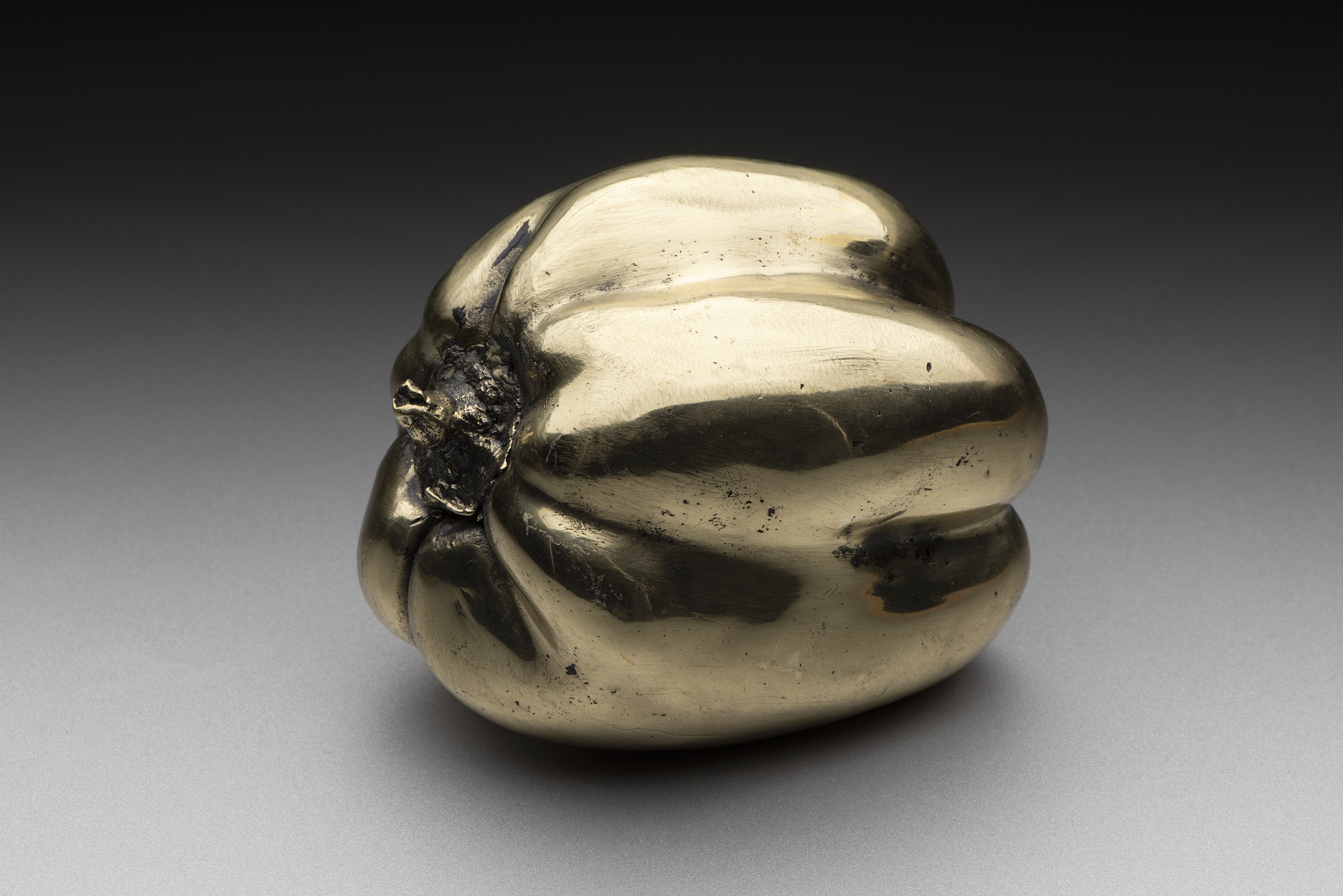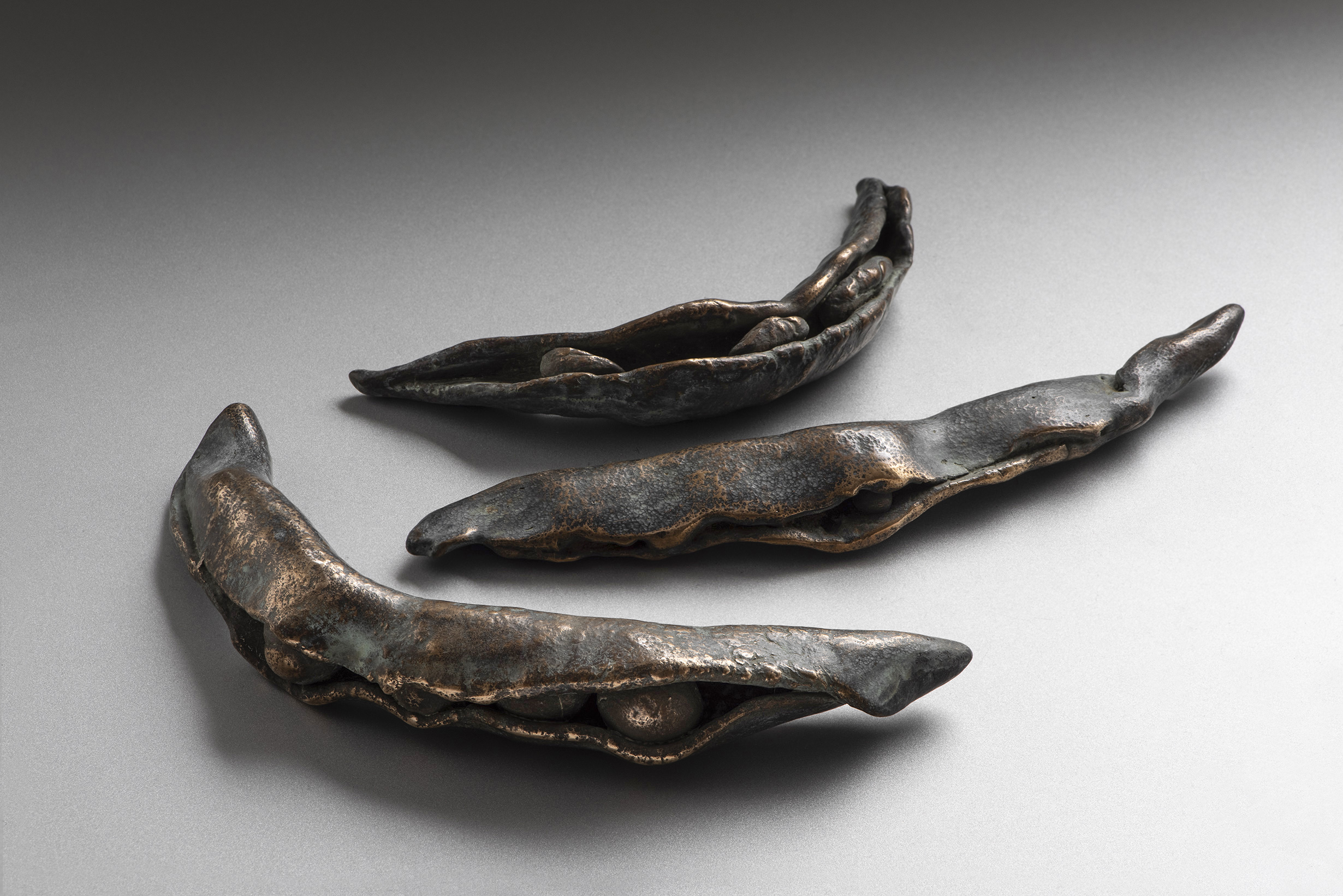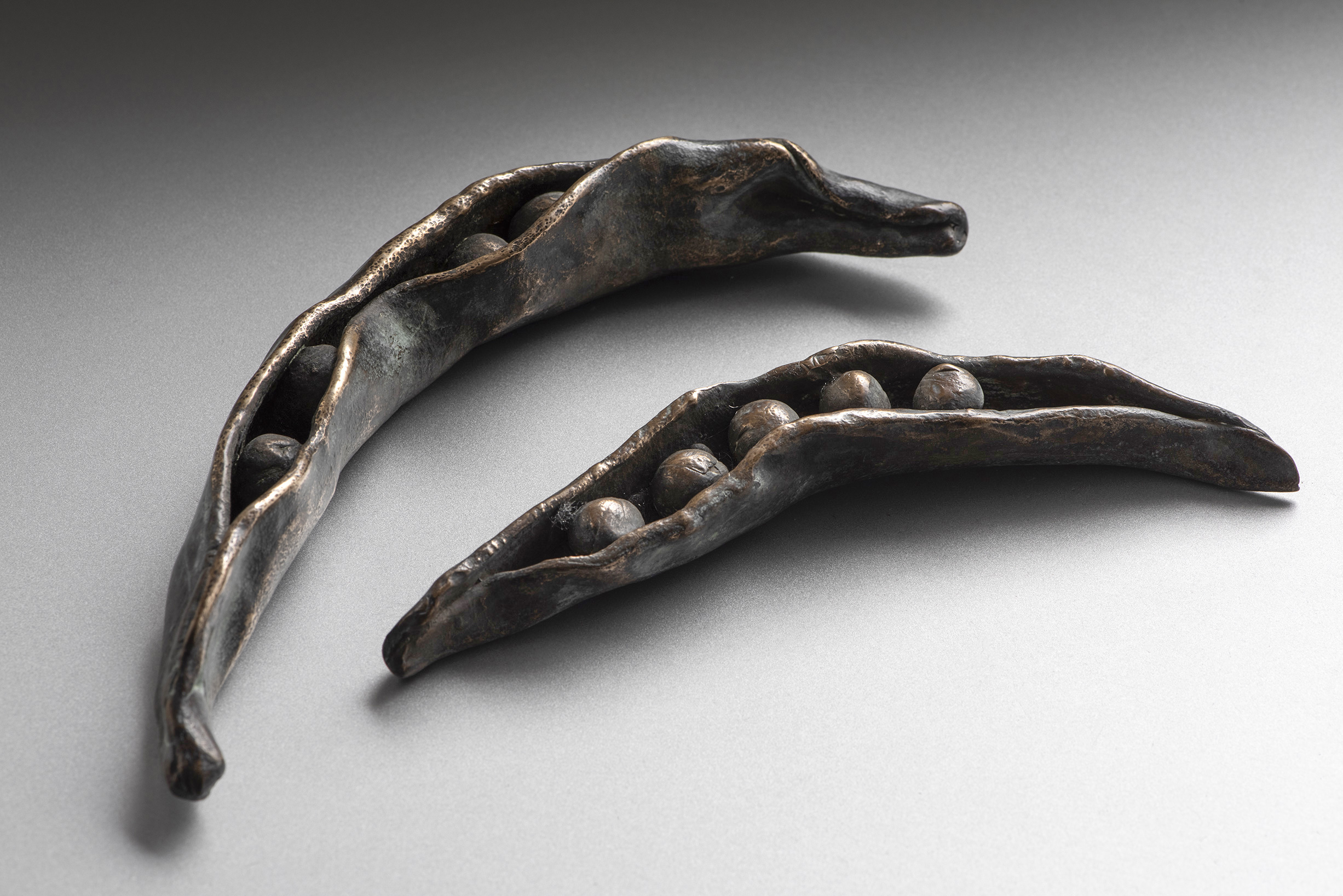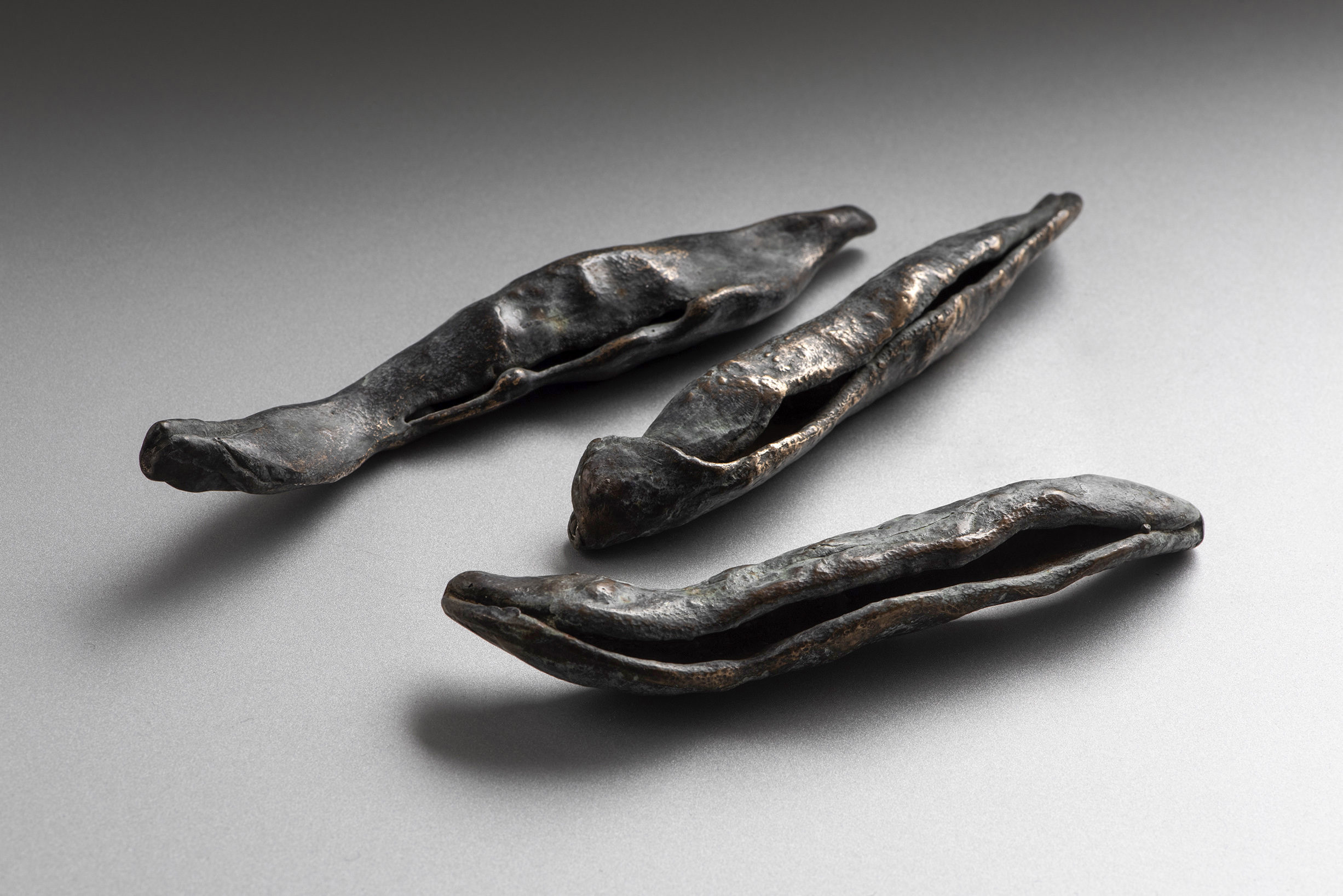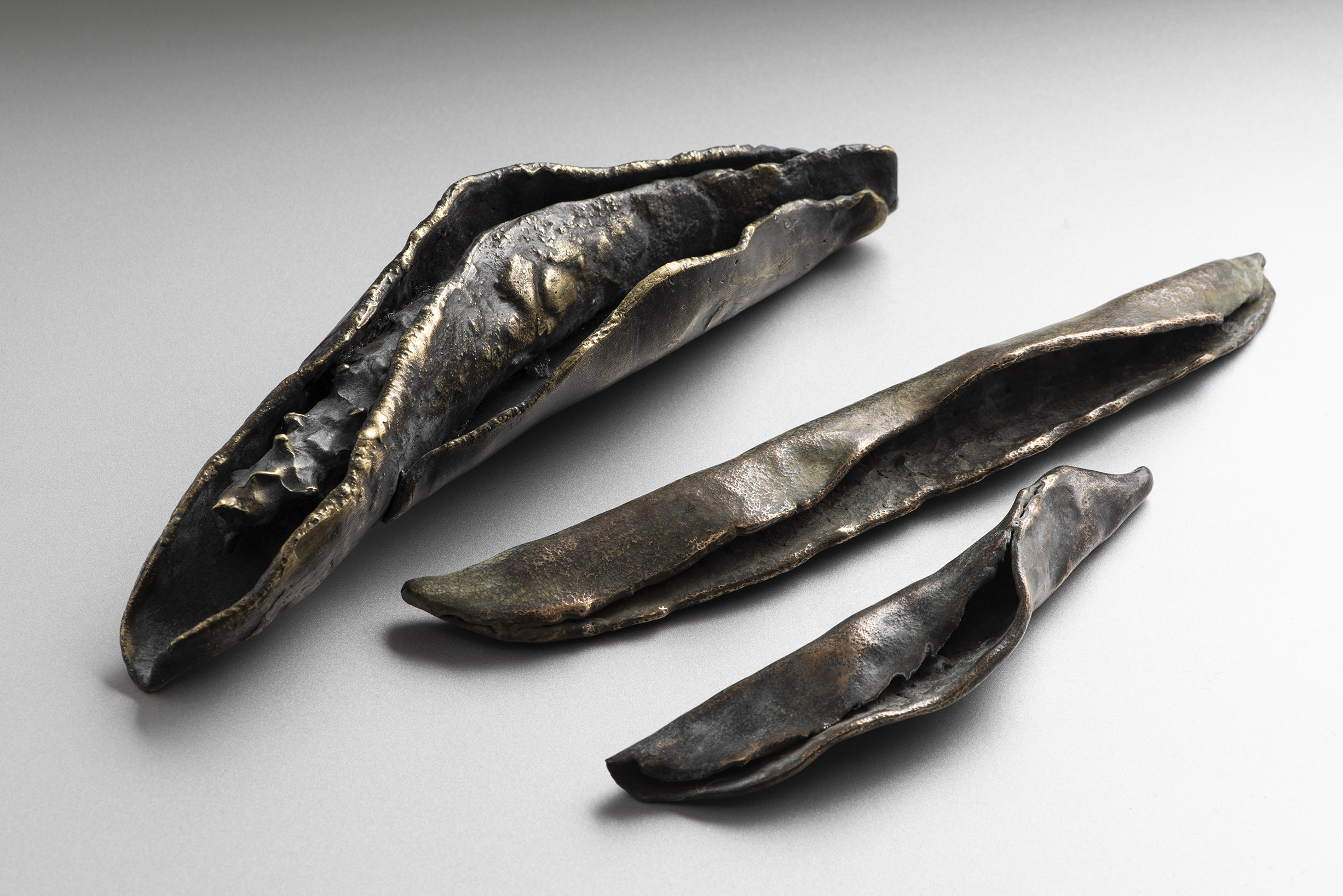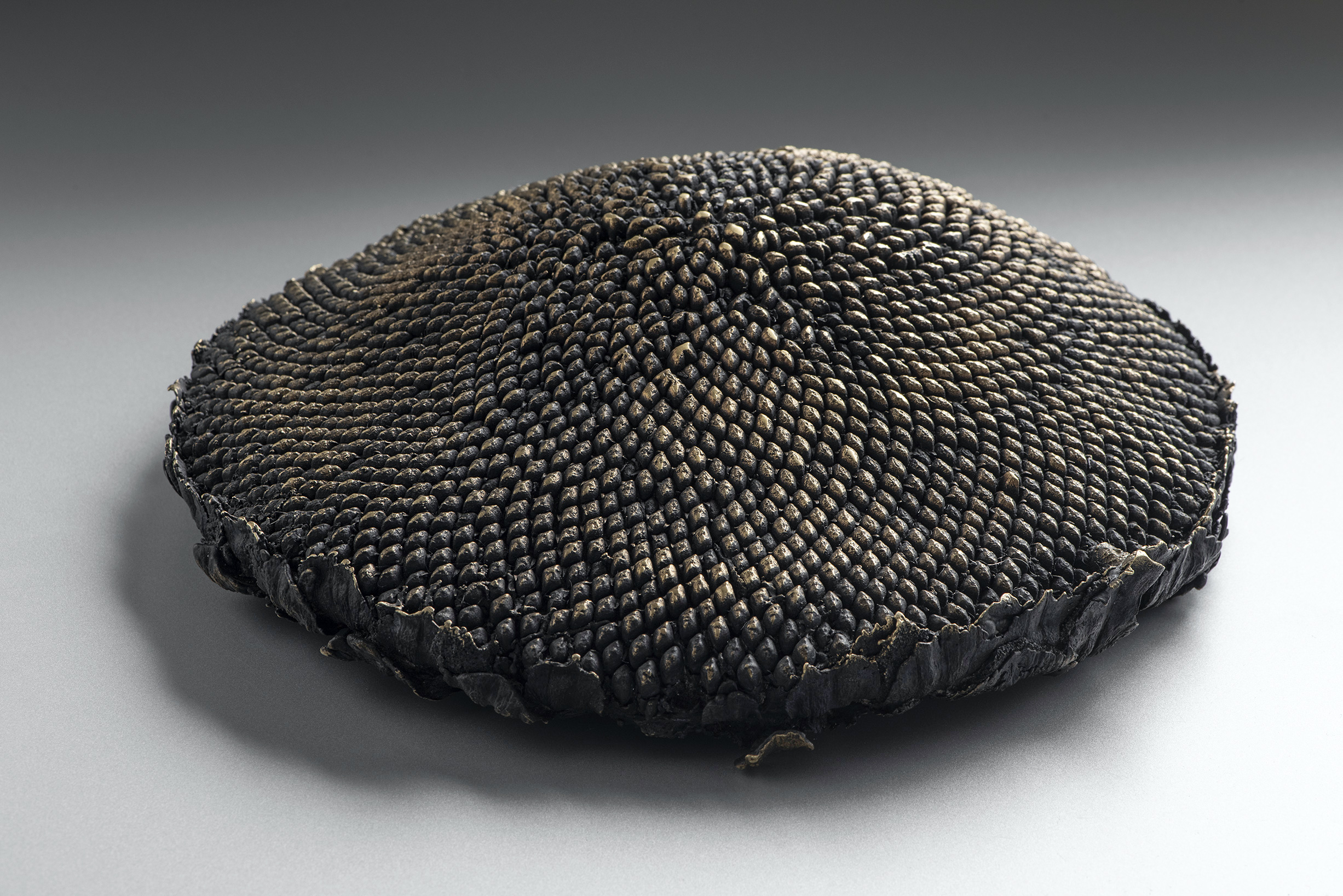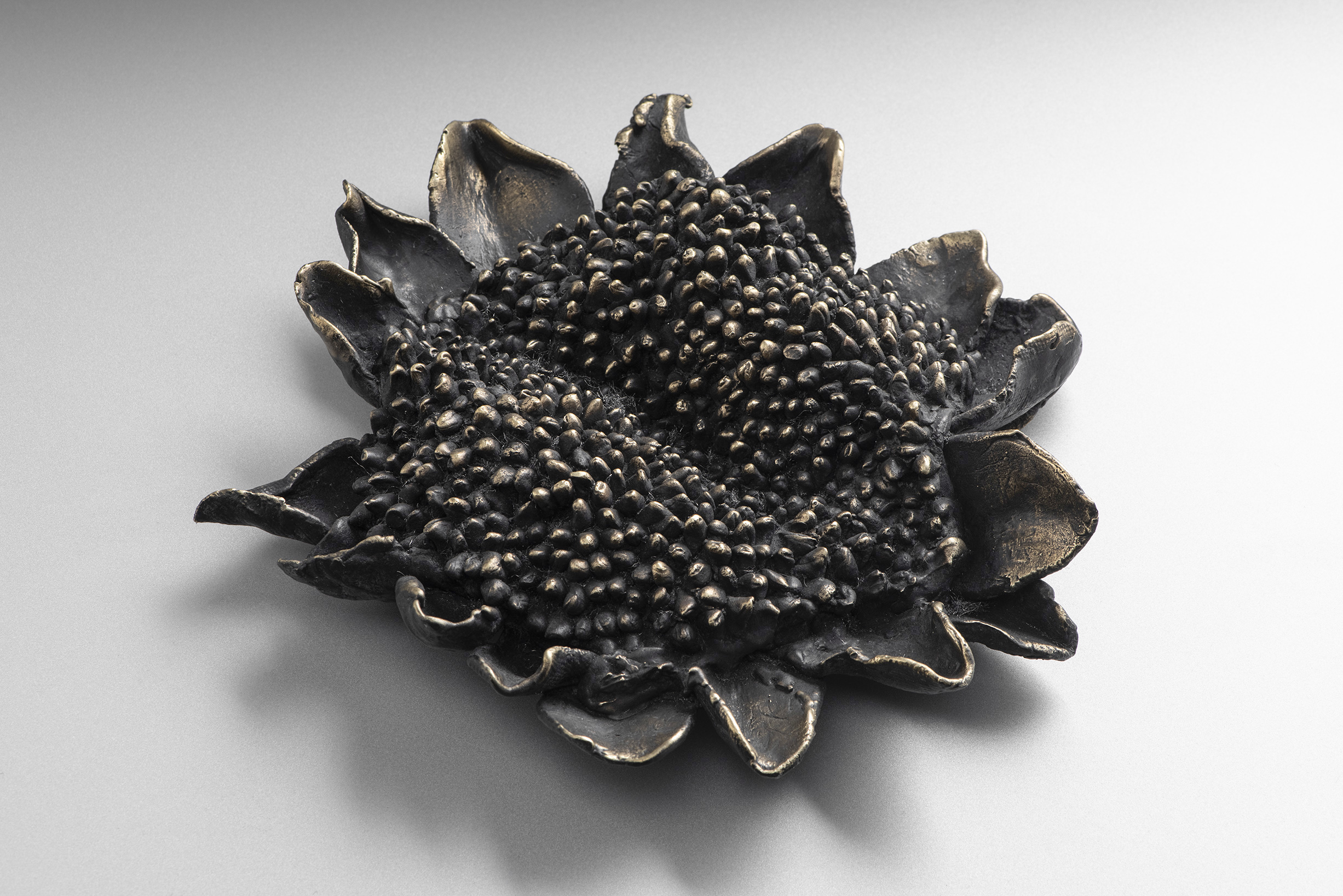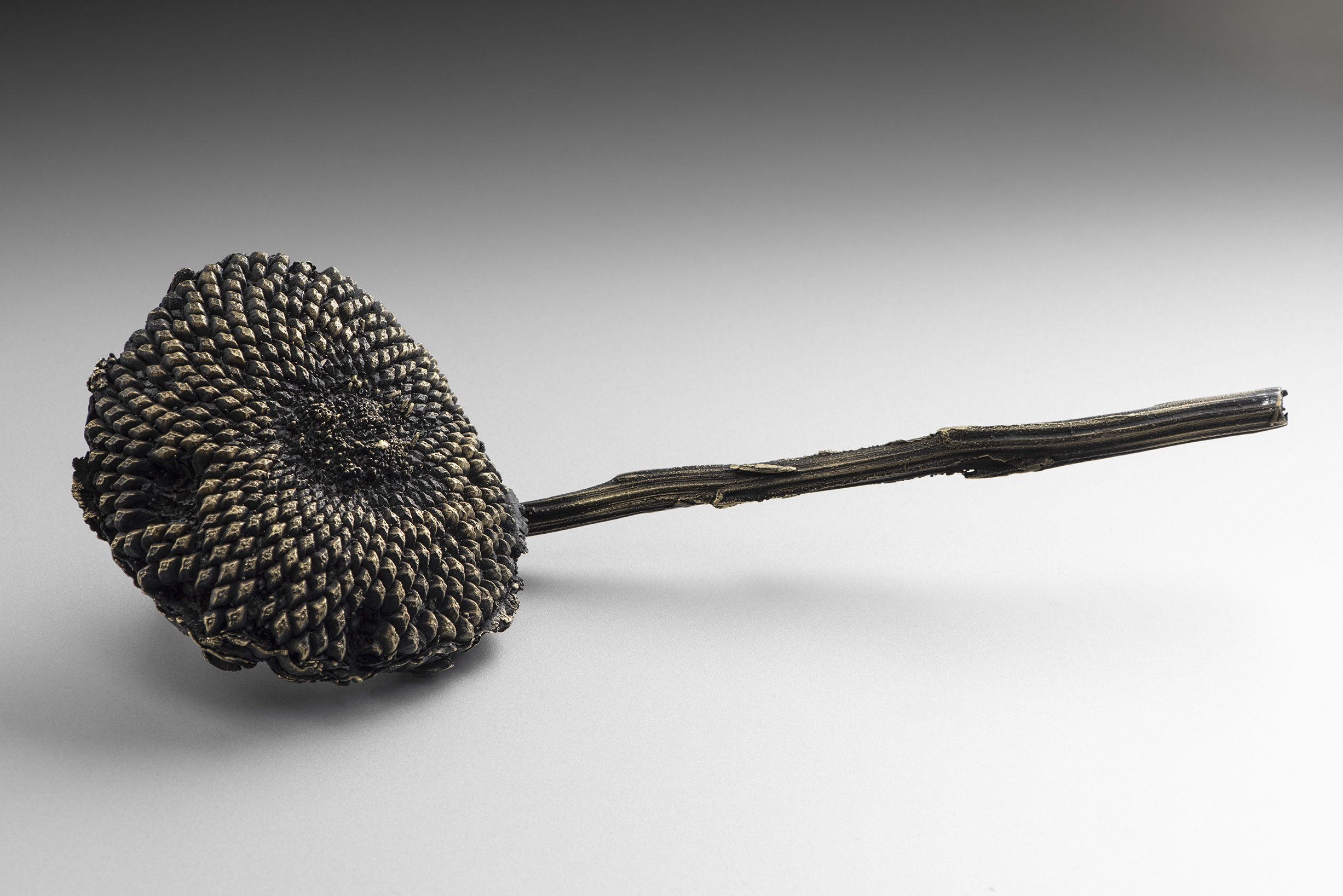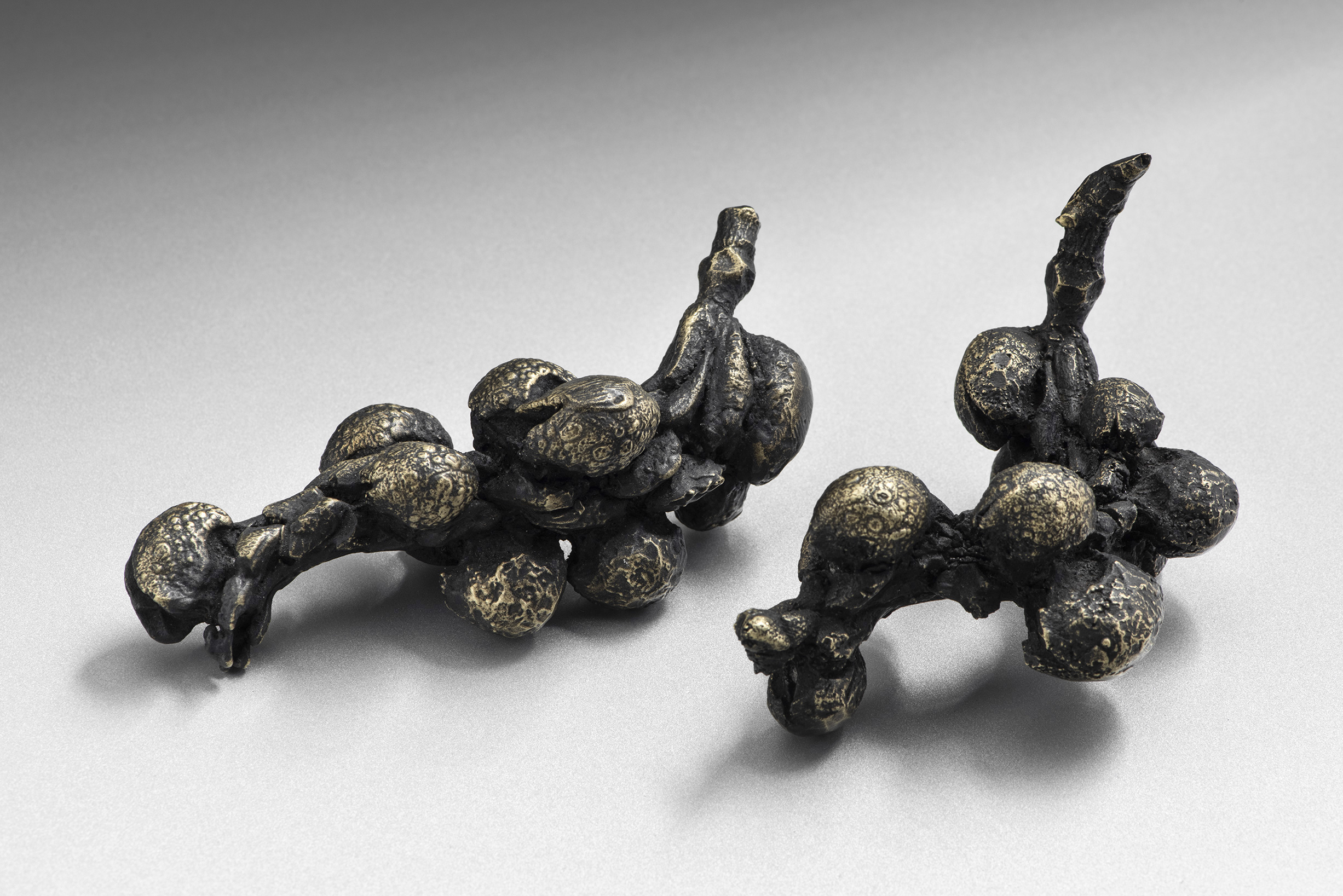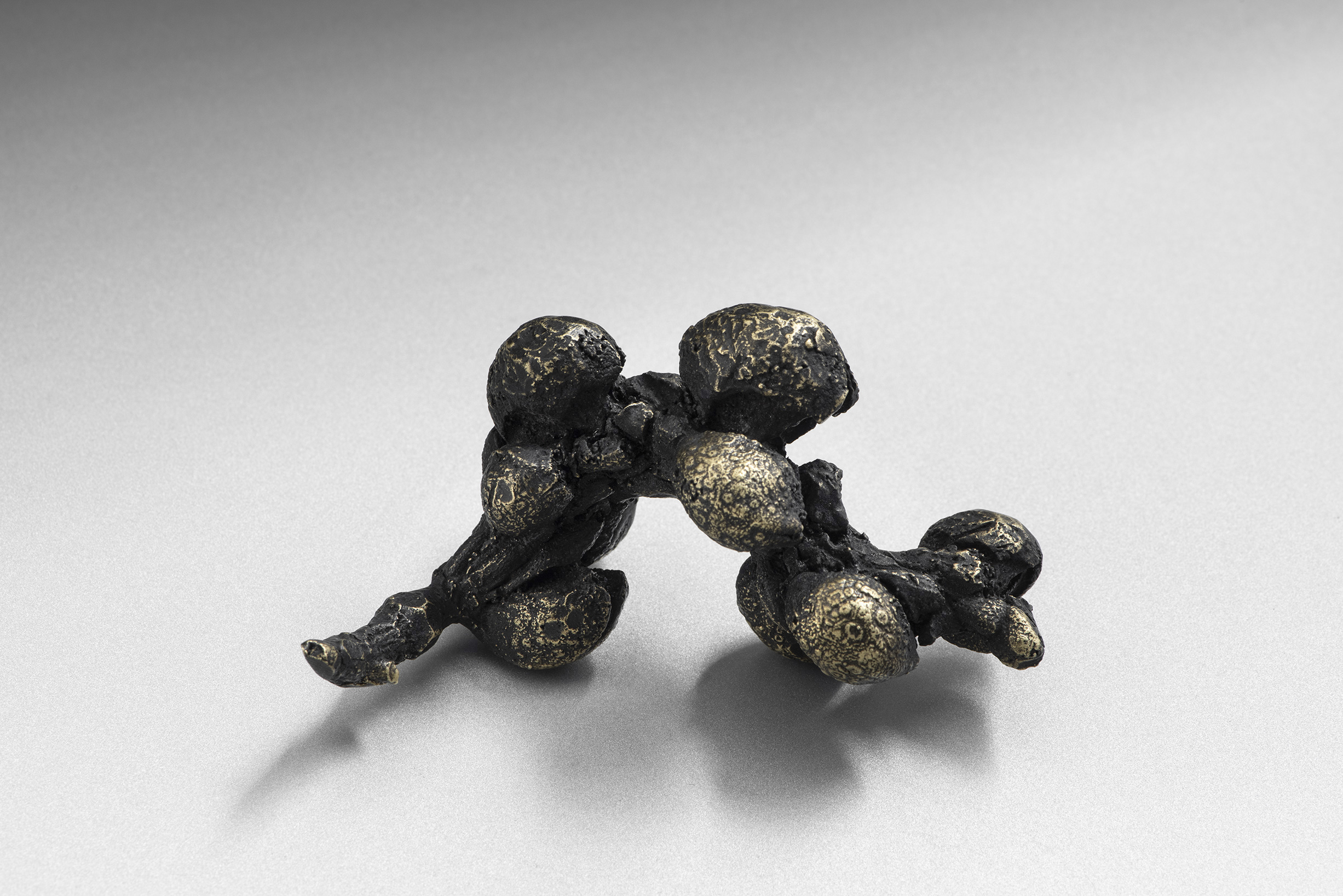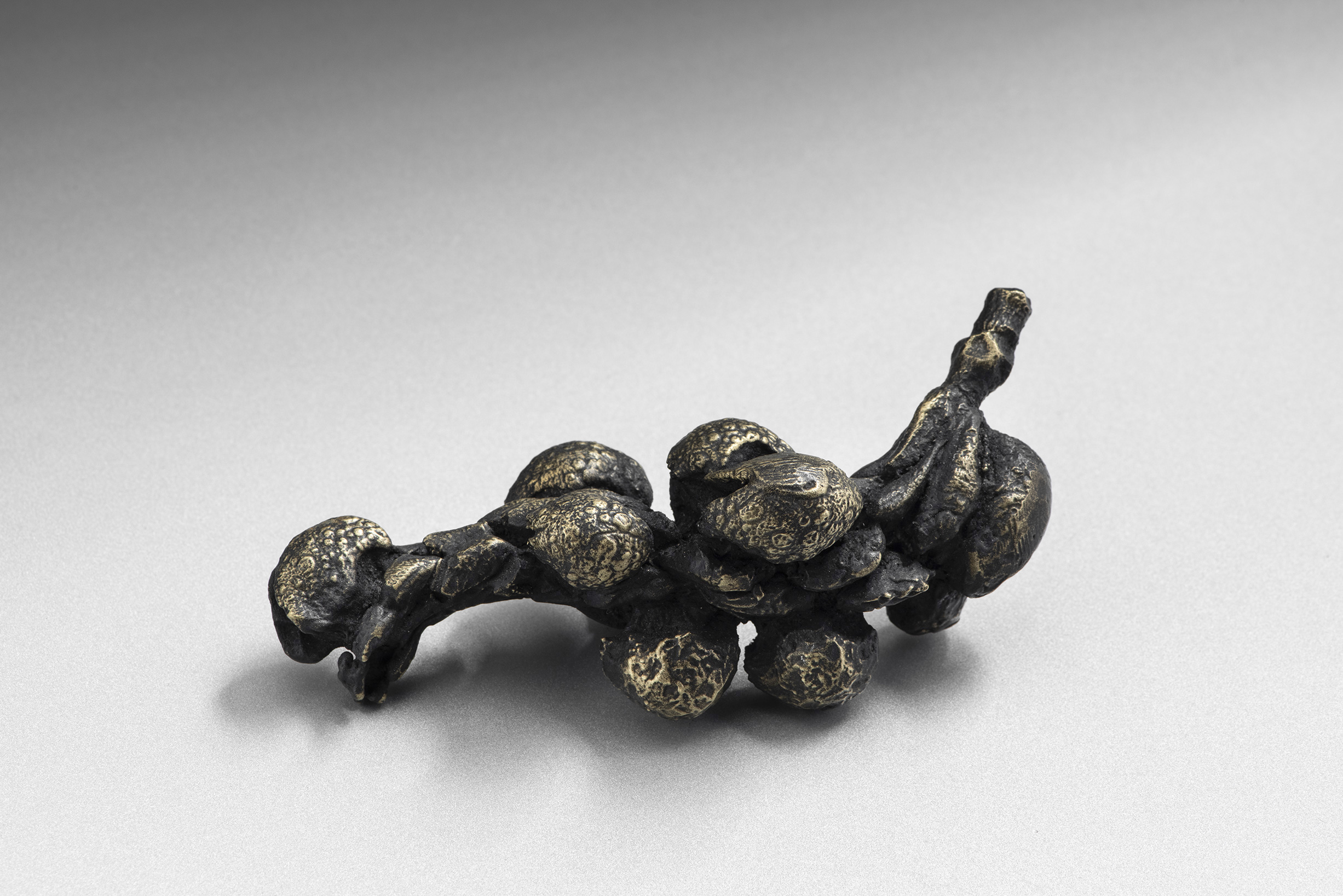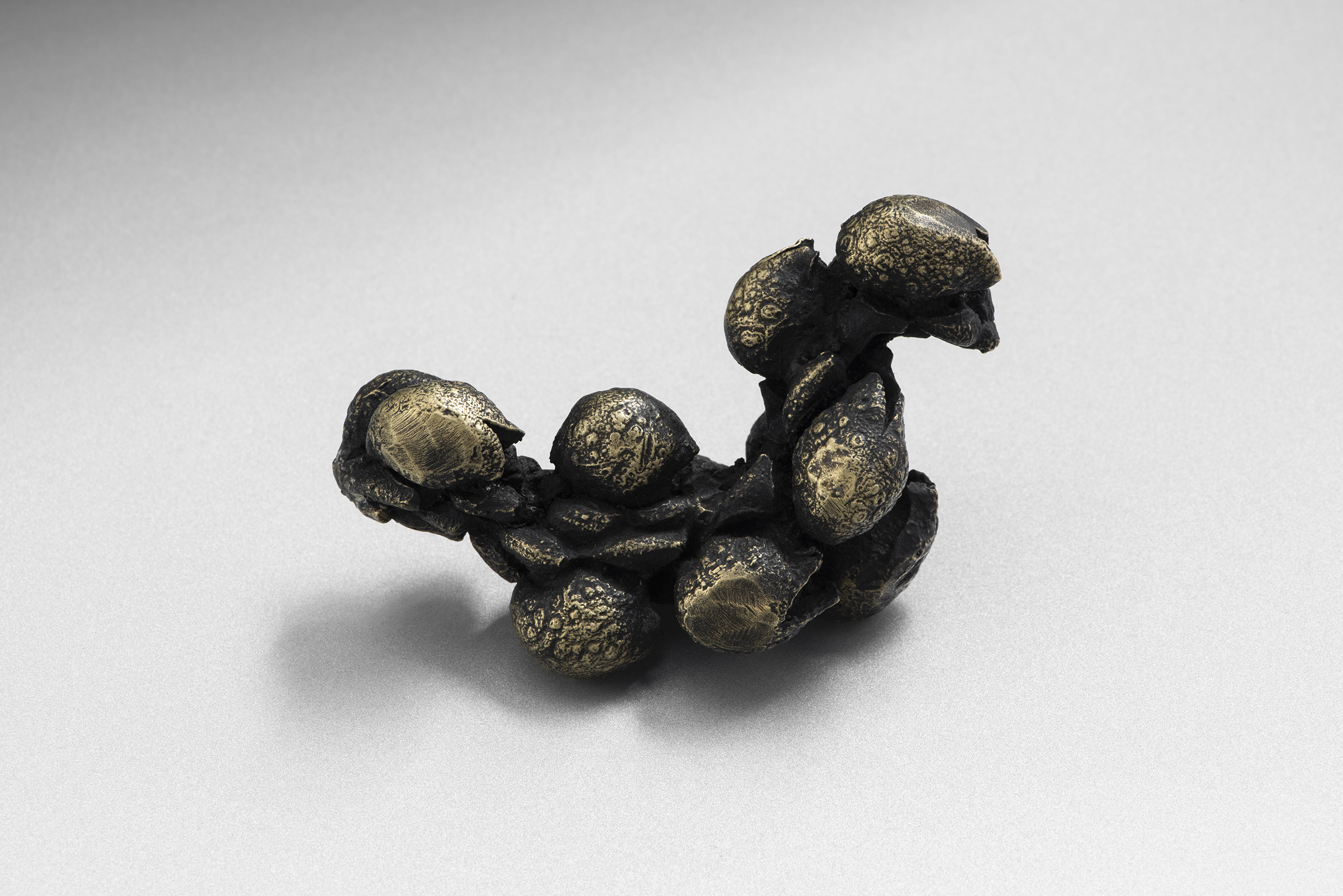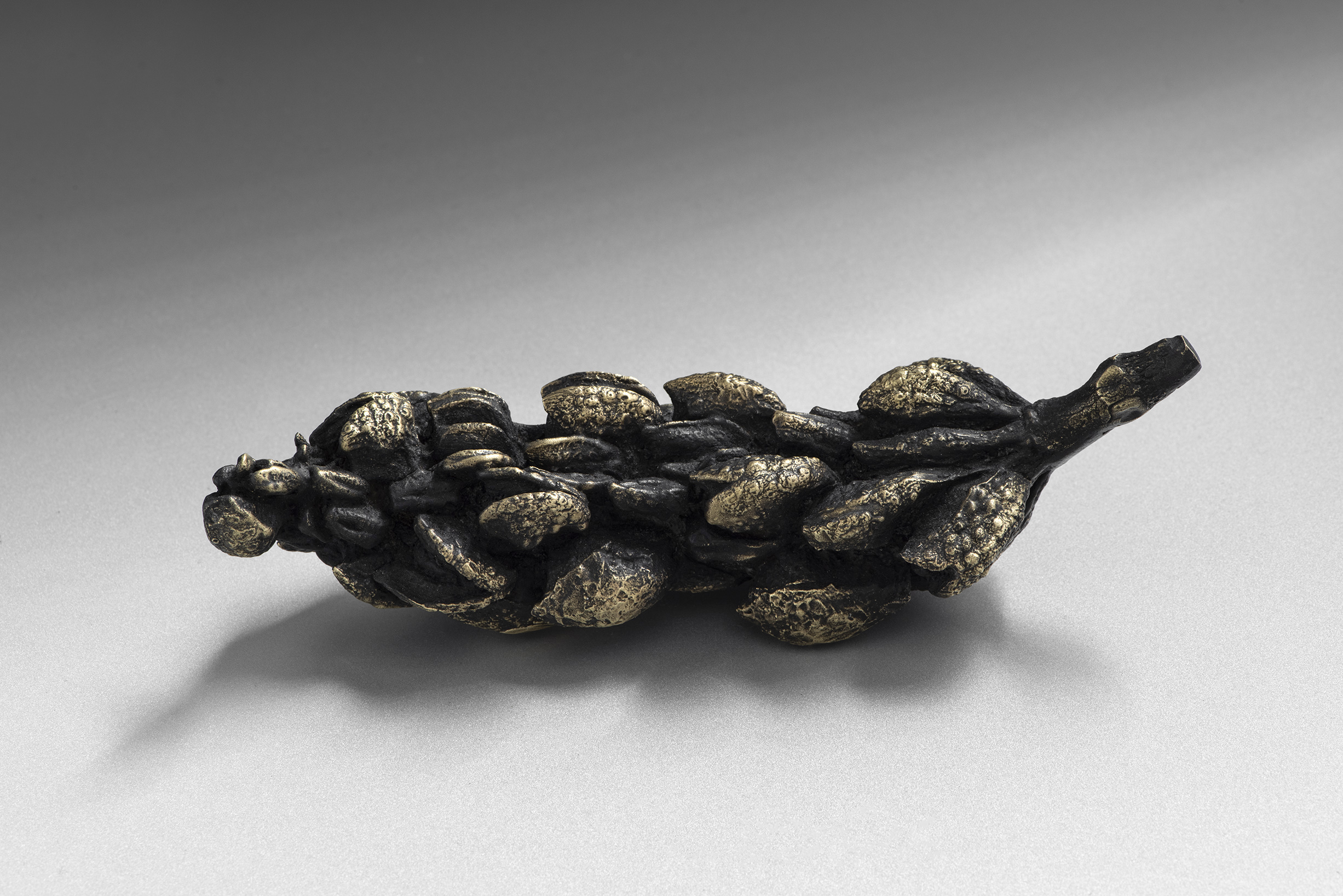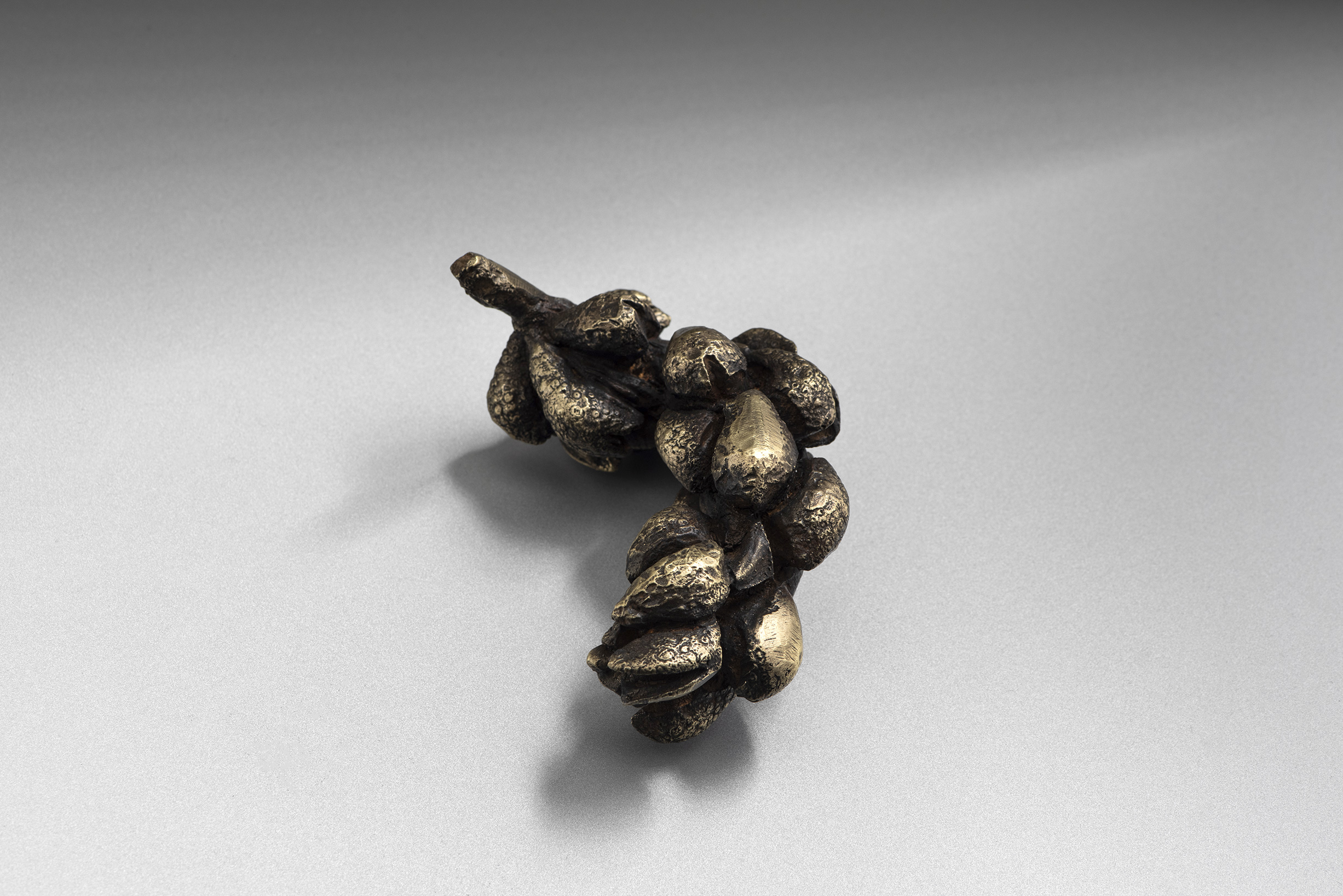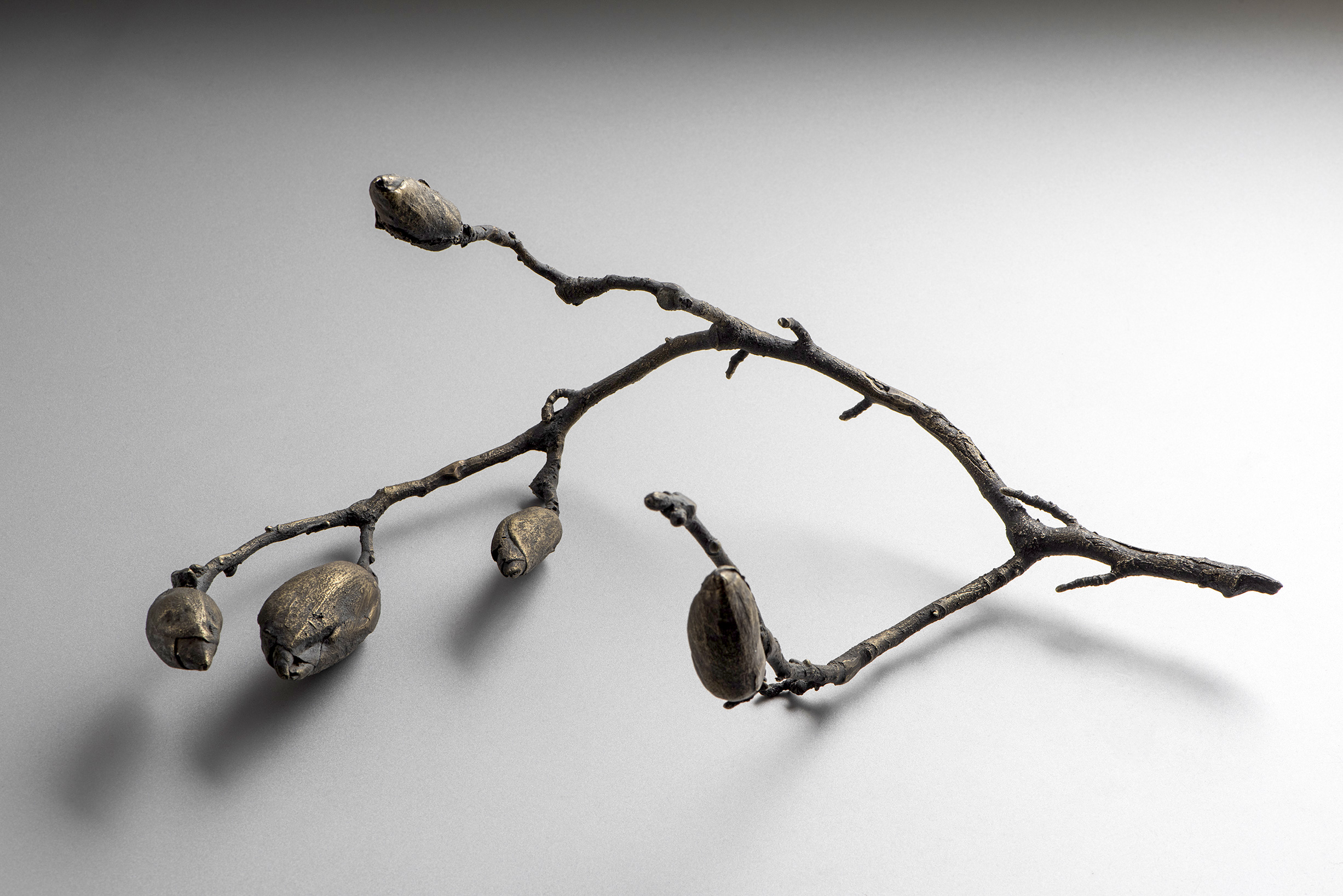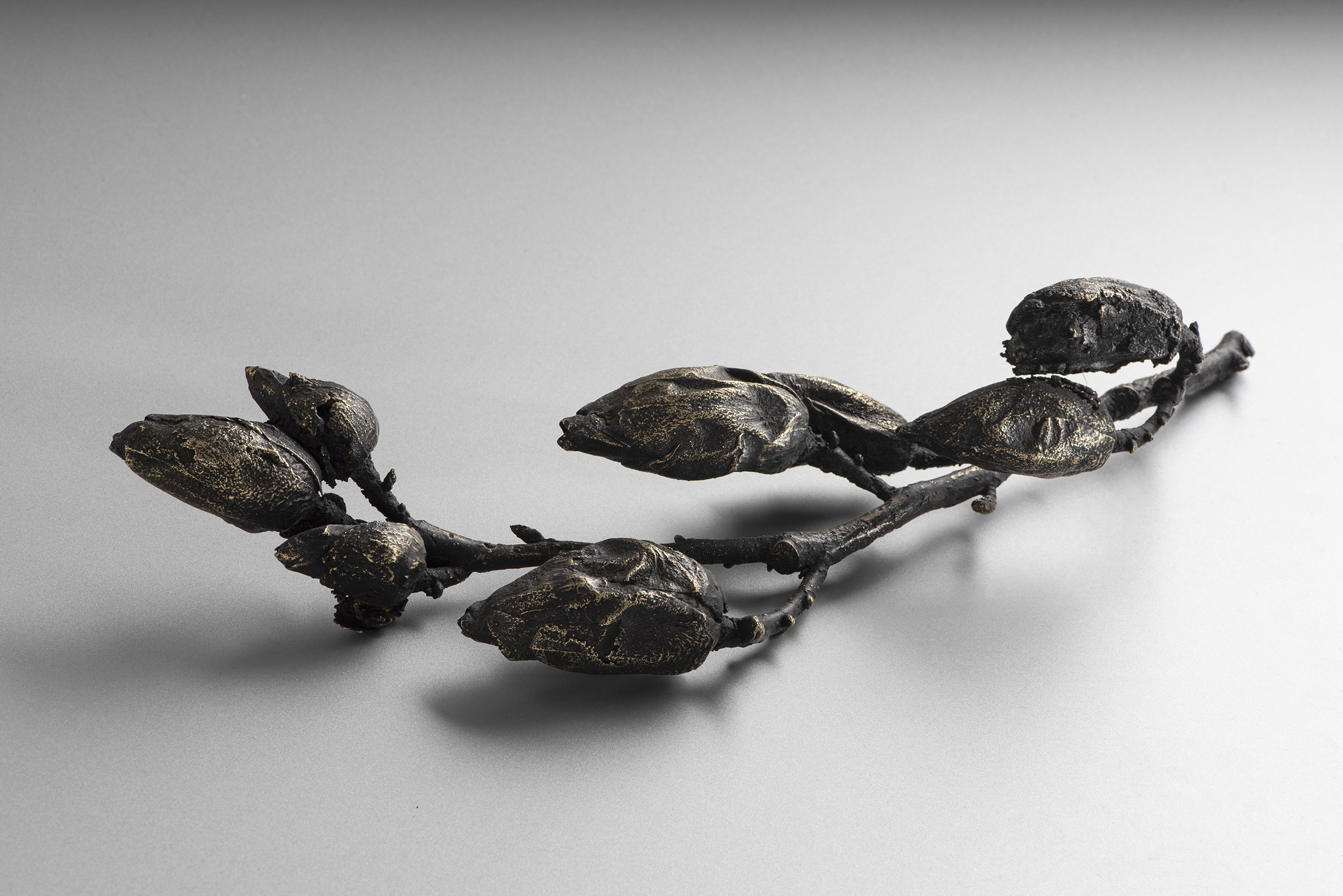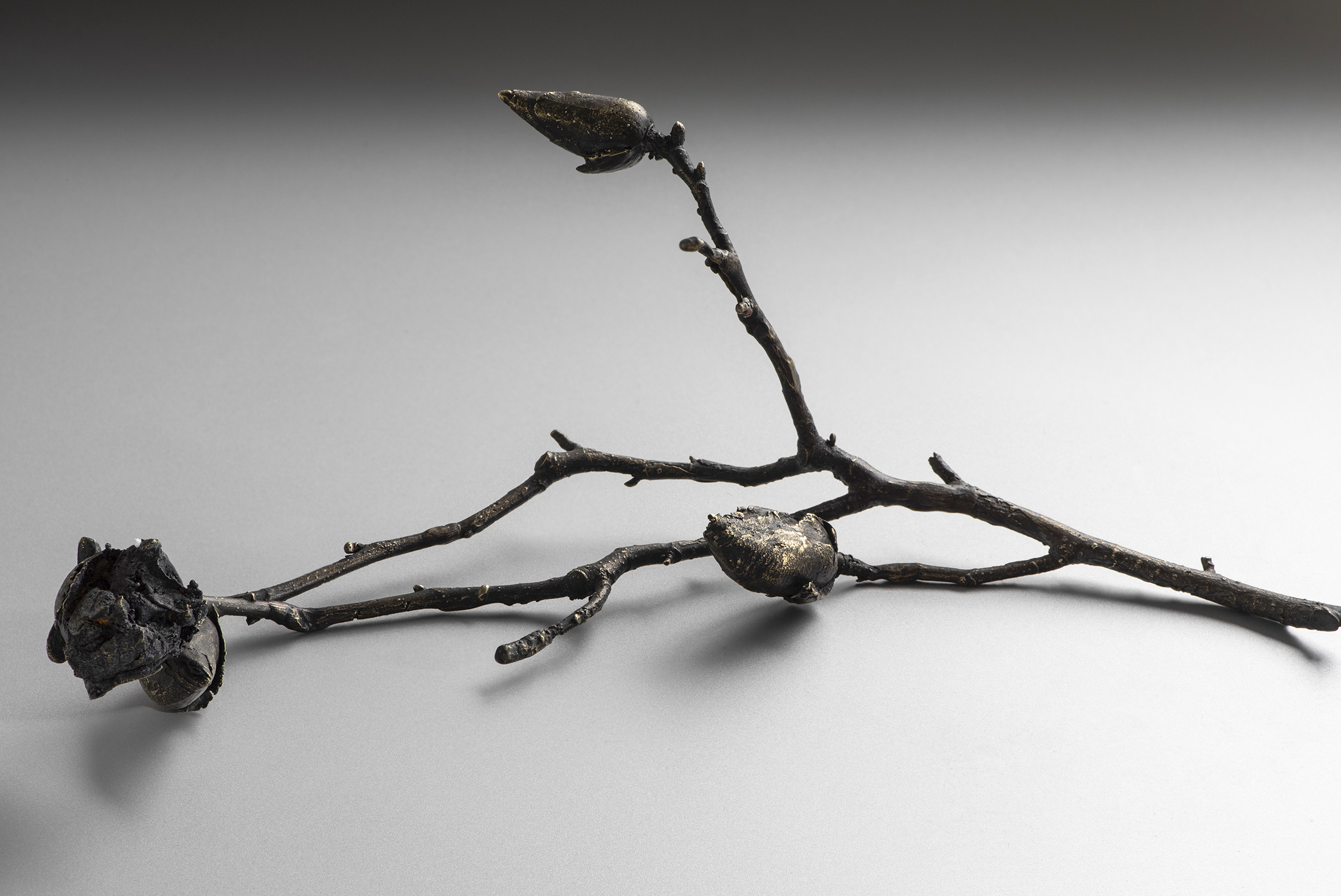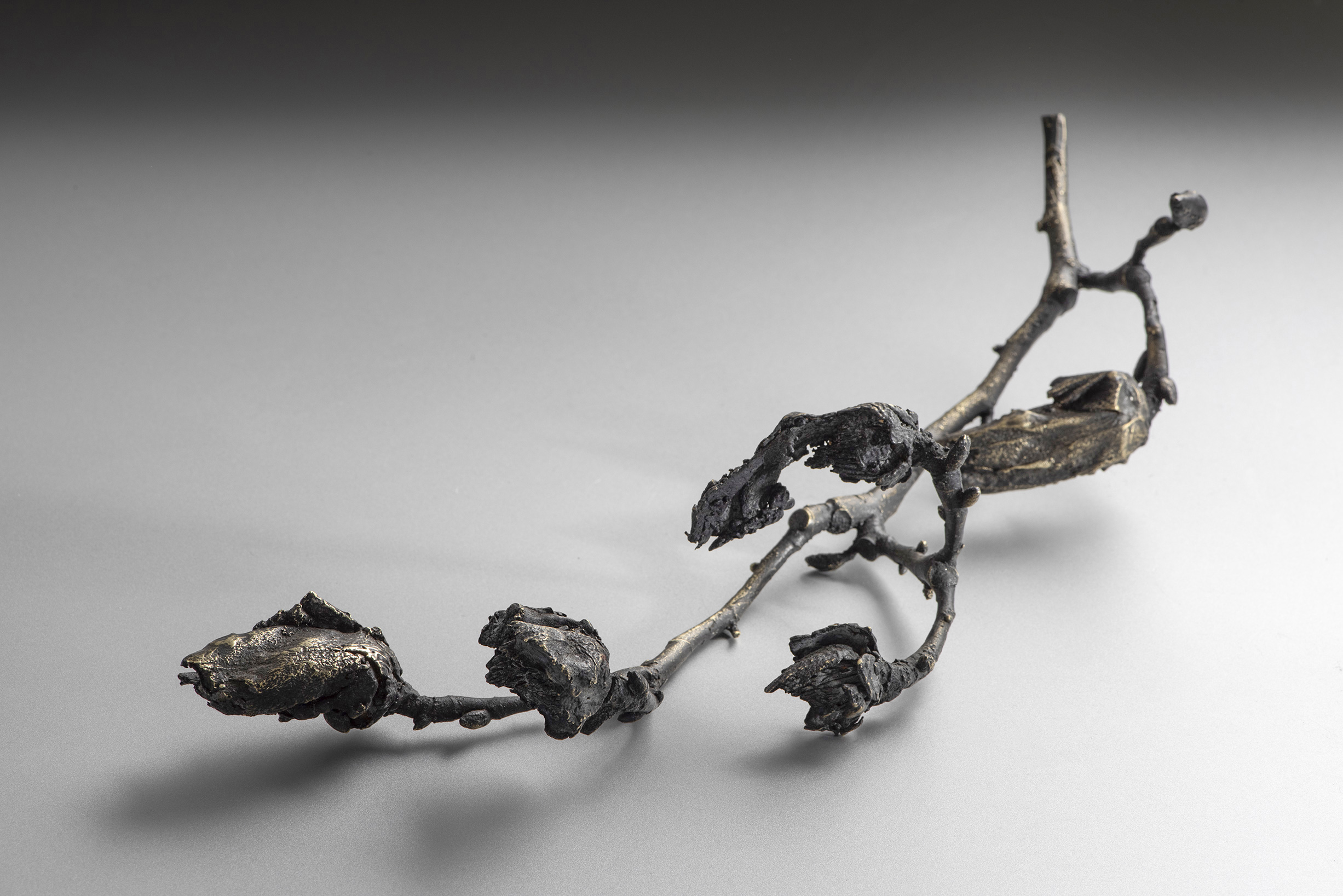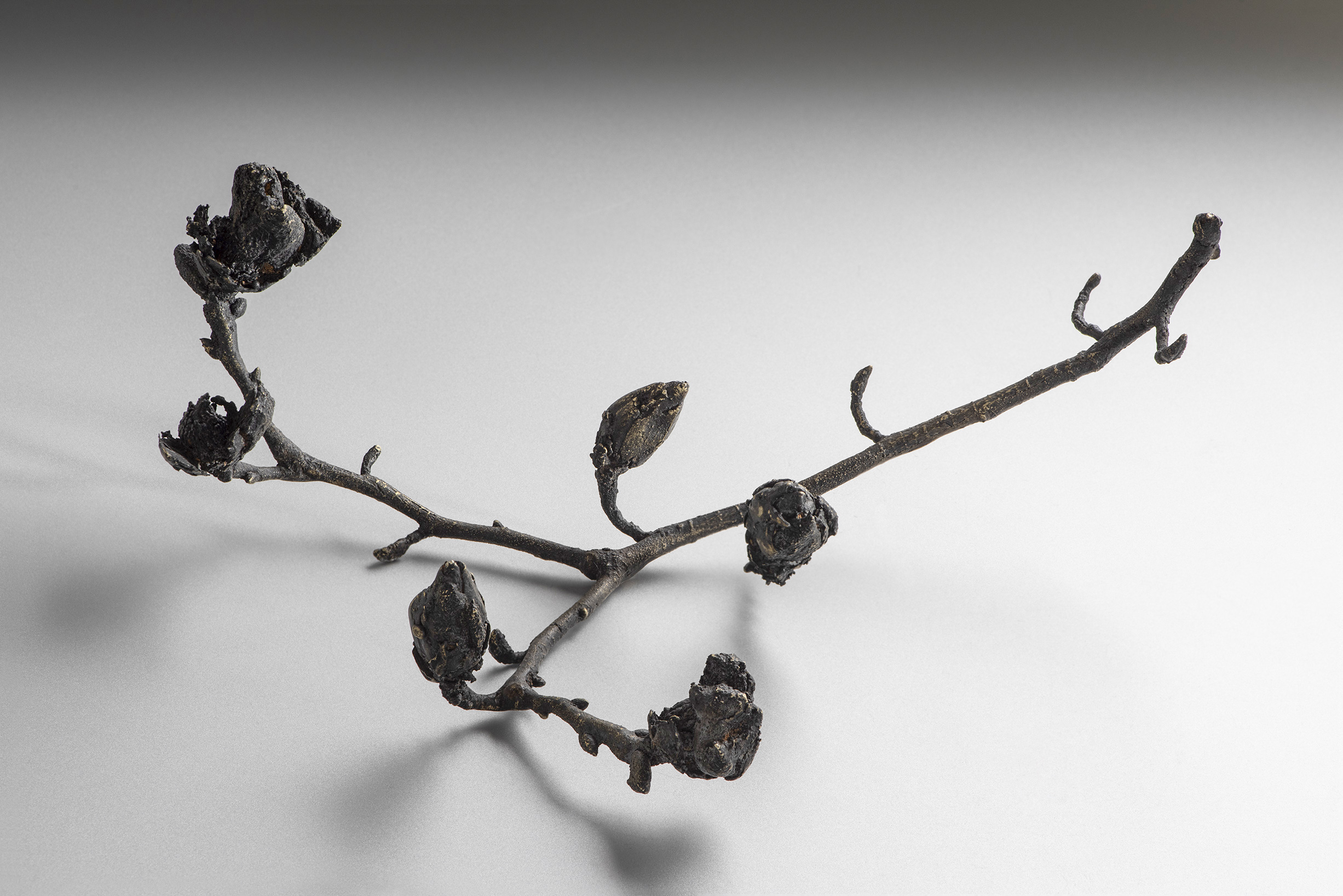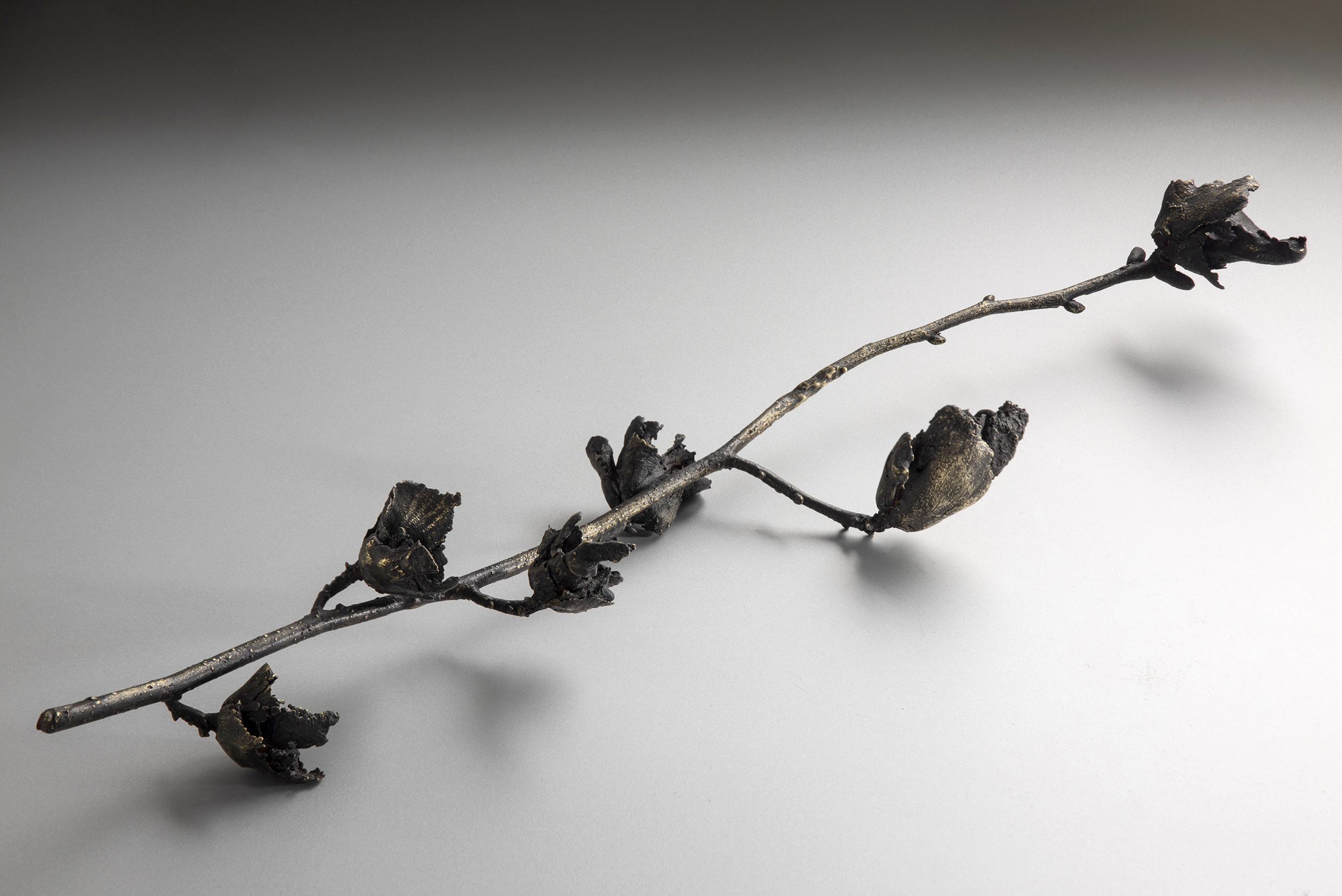Phyton Morphe
2022
Objeto
Objeto
Phyton Morphe: dícese de la representación escultórica que imita la estructura de un organismo vegetal. En la cultura inca, existían diferentes representaciones PHYTON-VEGETAL, MORPHE-FORMA de tipo votivo para ofrendar a la naturaleza o los productos que se obtenían de ésta. Por lo general, se utilizaban para dar gracias a la madre tierra por las cosechas recogidas y para ello, solían enterrarse en los campos de cultivo.
En el piso de la galería están dispuestas varias estructuras rectangulares que remiten a camas de siembra. Son oscuras como la tierra cuando recién es regada y en cada una de ellas yacen distintas figuras fitomorfas. Están elaboradas con materiales que reconocemos por ser parte de la cultura universal –encontramos allí el bronce, la cerámica gres y la porcelana– o por ser una materialidad característica de una tradición artesanal chilena como lo es la crin.
El origen de esta muestra es el anhelo de Josefina Guilisasti de hacer un homenaje a cinco piezas fitomorfas pertenecientes a la colección del Museo Chileno de Arte Precolombino de Santiago. La aspiración de la artista era producir una muestra colectiva y para ello convocó a Paula Subercaseaux, Inés Villalobos, Ruth Méndez e Hilda Díaz. Las tres últimas son artesanas del pueblo de Rari (Región del Maule) e Hilda ha sido distinguida como Tesoro Humano Vivo. Así, Phyton Morphe tiene por inspiración las piezas precolombinas mencionadas, pero fundamentalmente expresa la admiración de Guilisasti hacia el trabajo comunitario de las tejedoras de crin.
Las obras de Josefina, Paula, Ruth, Inés e Hilda surgen bajo esta premisa como una manera simbólica de reconectar la tierra con el cielo. Phyton Morphe nos invita, entonces, tanto física como psíquicamente, a revincularnos con la hebra inaugural del tejido que aquí nos convoca.
Isabel Margarita Bustos
En el piso de la galería están dispuestas varias estructuras rectangulares que remiten a camas de siembra. Son oscuras como la tierra cuando recién es regada y en cada una de ellas yacen distintas figuras fitomorfas. Están elaboradas con materiales que reconocemos por ser parte de la cultura universal –encontramos allí el bronce, la cerámica gres y la porcelana– o por ser una materialidad característica de una tradición artesanal chilena como lo es la crin.
El origen de esta muestra es el anhelo de Josefina Guilisasti de hacer un homenaje a cinco piezas fitomorfas pertenecientes a la colección del Museo Chileno de Arte Precolombino de Santiago. La aspiración de la artista era producir una muestra colectiva y para ello convocó a Paula Subercaseaux, Inés Villalobos, Ruth Méndez e Hilda Díaz. Las tres últimas son artesanas del pueblo de Rari (Región del Maule) e Hilda ha sido distinguida como Tesoro Humano Vivo. Así, Phyton Morphe tiene por inspiración las piezas precolombinas mencionadas, pero fundamentalmente expresa la admiración de Guilisasti hacia el trabajo comunitario de las tejedoras de crin.
Las obras de Josefina, Paula, Ruth, Inés e Hilda surgen bajo esta premisa como una manera simbólica de reconectar la tierra con el cielo. Phyton Morphe nos invita, entonces, tanto física como psíquicamente, a revincularnos con la hebra inaugural del tejido que aquí nos convoca.
Isabel Margarita Bustos
Phyton Morphe: refers to the sculptural representation that imitates the structure of a plant organism. In the Inca culture, there were different representations PHYTON-VEGETAL, MORPHE-FORMA of votive type to offer to Nature or the products obtained from it. In general, they were used to thank Mother Earth for the harvests collected. They used to be buried in the fields.
On the gallery floor there are arranged several rectangular structures that refer to planting beds. They are as dark as freshly watered soil and in each of them lie different phytomorphic figures. They are made with materials that we recognize for being part of universal culture -such as bronze, stoneware ceramics and porcelain- or for being a material characteristic of a Chilean handicraft tradition, such as horsehair.
This exhibition was conceived by Josefina Guillisasti as a tribute to five phytomorphic pieces belonging to the collection of the Chilean Museum of Pre-Columbian Art in Santiago. The artist's aspiration was to produce a group exhibition and for this purpose she invited Paula Subercaseaux, Inés Villalobos, Ruth Méndez and Hilda Díaz. The last three are artisans from the village of Rari (Maule Region) and Hilda has been distinguished by the government as a «Living Human Treasure». Thus, Phyton Morphe is inspired by the aforementioned pre-Columbian pieces, but fundamentally expresses Guilisasti's admiration towards the community work of the horsehair weavers.
The works of Josefina, Paula, Ruth, Inés and Hilda emerge from this premise as a symbolic way of reconnecting earth and sky. Phyton Morphe invites us, then, both physically and psychically, to reconnect with the inaugural strand of the fabric that summons us here.
On the gallery floor there are arranged several rectangular structures that refer to planting beds. They are as dark as freshly watered soil and in each of them lie different phytomorphic figures. They are made with materials that we recognize for being part of universal culture -such as bronze, stoneware ceramics and porcelain- or for being a material characteristic of a Chilean handicraft tradition, such as horsehair.
This exhibition was conceived by Josefina Guillisasti as a tribute to five phytomorphic pieces belonging to the collection of the Chilean Museum of Pre-Columbian Art in Santiago. The artist's aspiration was to produce a group exhibition and for this purpose she invited Paula Subercaseaux, Inés Villalobos, Ruth Méndez and Hilda Díaz. The last three are artisans from the village of Rari (Maule Region) and Hilda has been distinguished by the government as a «Living Human Treasure». Thus, Phyton Morphe is inspired by the aforementioned pre-Columbian pieces, but fundamentally expresses Guilisasti's admiration towards the community work of the horsehair weavers.
The works of Josefina, Paula, Ruth, Inés and Hilda emerge from this premise as a symbolic way of reconnecting earth and sky. Phyton Morphe invites us, then, both physically and psychically, to reconnect with the inaugural strand of the fabric that summons us here.

Galería Patricia Ready – Santiago, Chile
